If Need Be
Solo Exhibition of Pejvak
Art Museum Z33
Hasselt, Belgium
June 12-Aug 22, 2021
LINK
Collections:
In the permanent collection of the M HKA, Antwerp, Belgium
Reviews:
Art Agenda
Subbacultcha
If Need Be is a constellation of stories about water scarcity. The exhibition leads you to the arid regions of Central Asia, the steppes of Mongolia, ancient Persia, and the American Great Plains. Pejvak strings together a series of hallucinatory events involving artificial glaciers, dams in the desert, and other human attempts to bring water under control.
Giving equal weight to gossip, legend and historical fact, Pejvak takes the role of an unreliable narrator, situating the struggle for water within the struggle for the historical record.
In collaboration with:
Mojtaba Abu Talebi, Timur Akhmetov, Javad Azari, Masoud Borbor, Dina Cheraghvand, Distributed Cognition Cooperative (Anna Engelhardt & Sasha Shestakova), Benjamin Filler, Hamid Ghezlou, Rudy Guedj, Bahar Modiri, Irakli Qolbaia, Anisa Sabiri, Farshad Tavakoli, Lisa Vetkhova
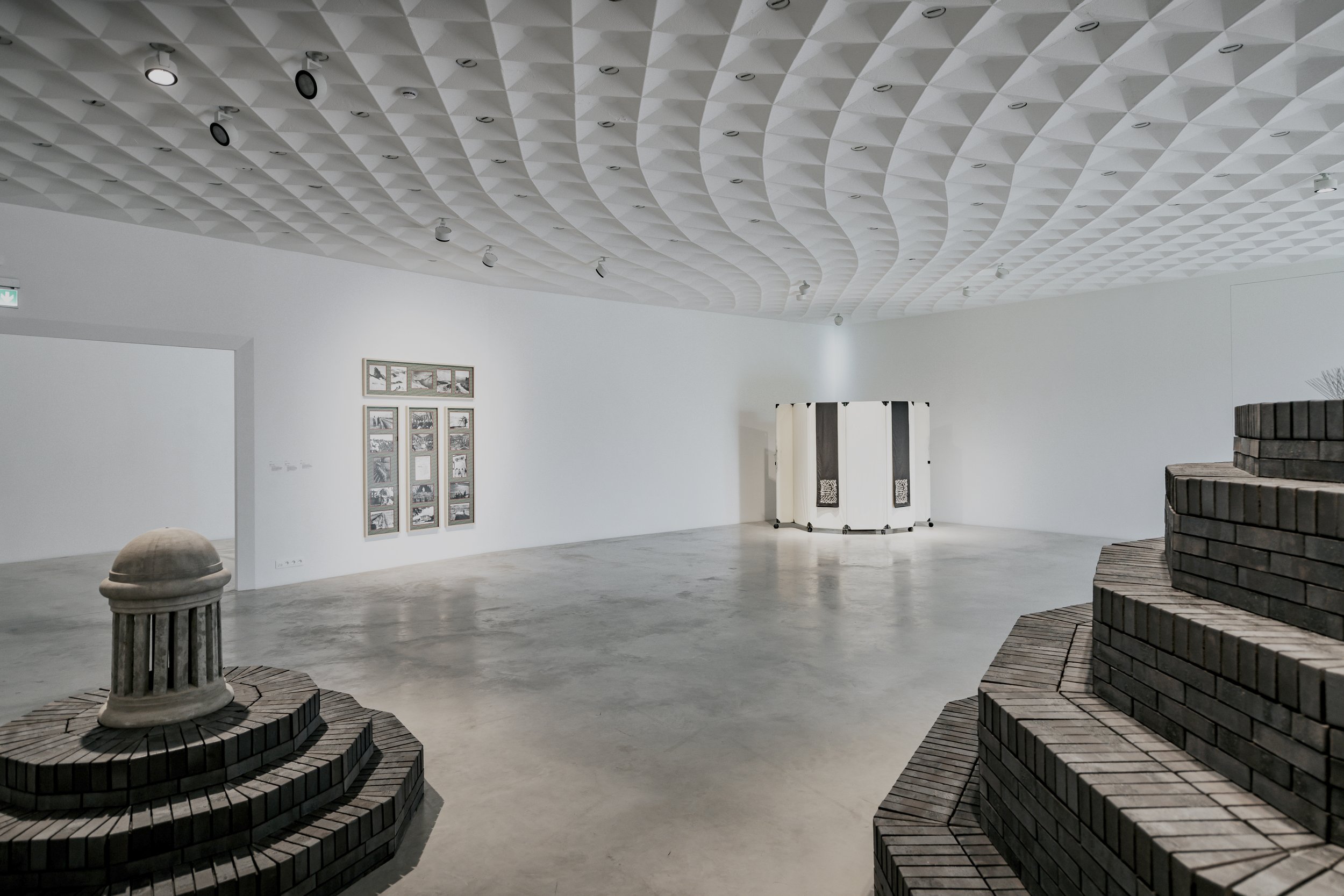
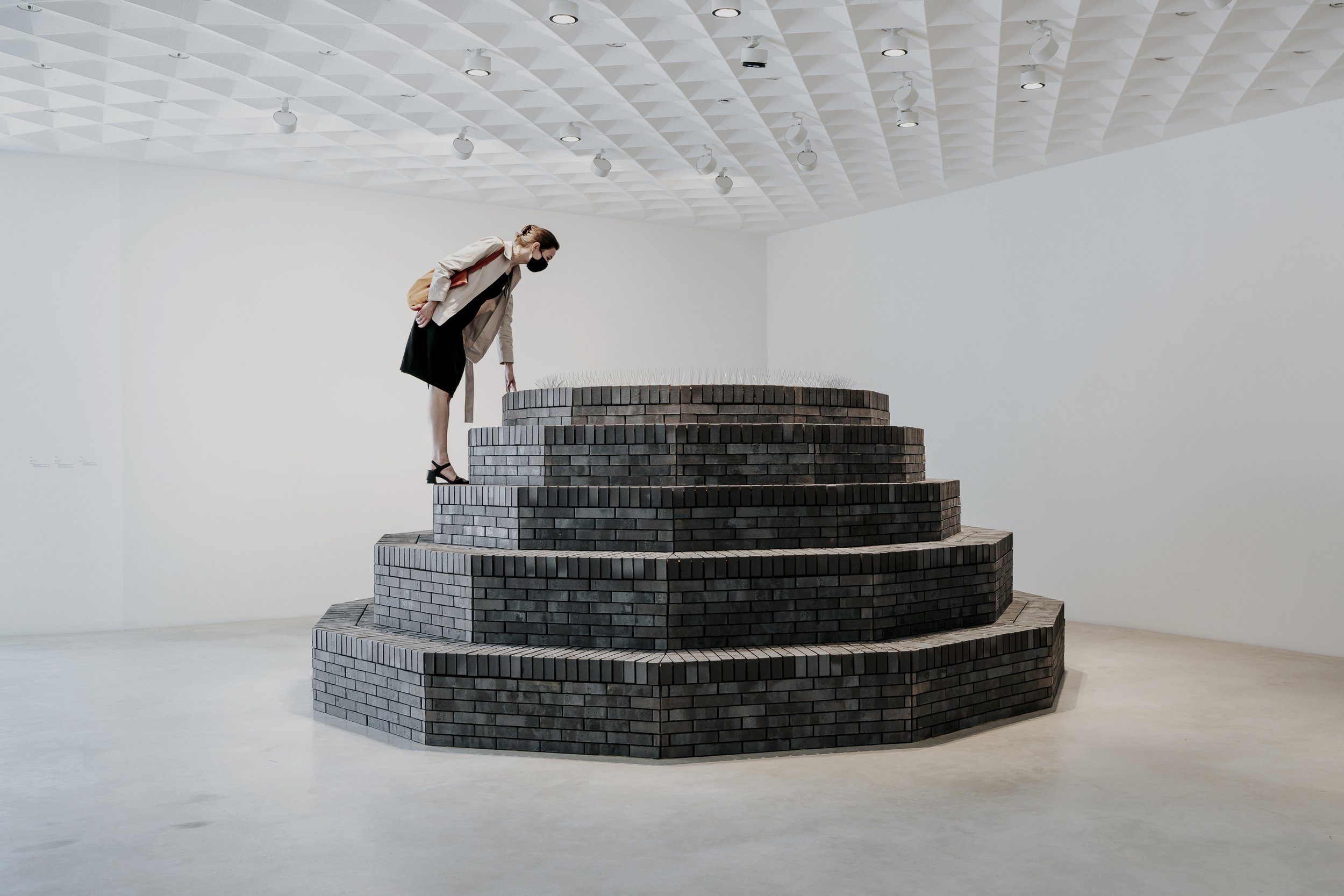
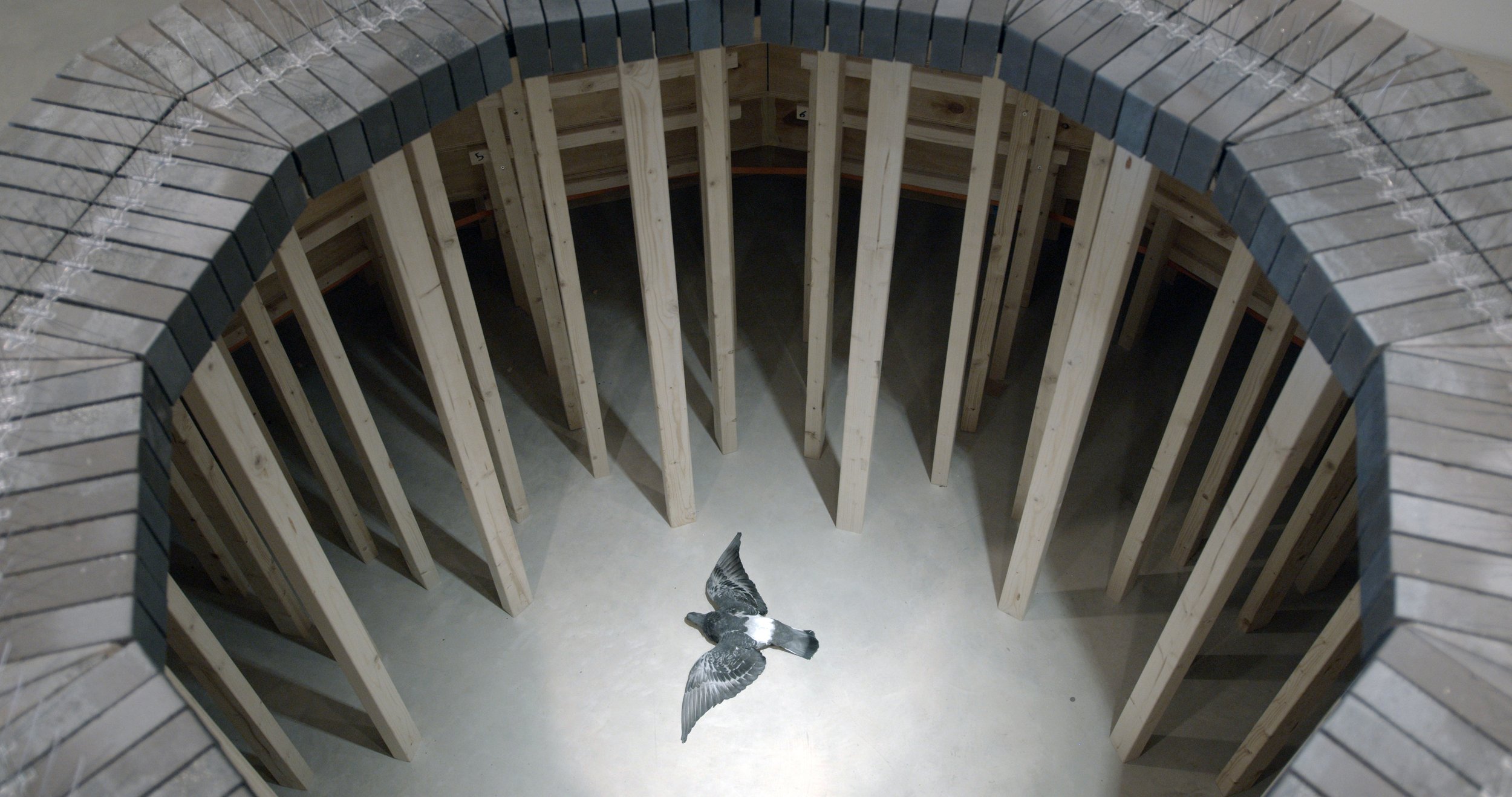

Invocation (An Incitement to Ruin)
Bricks, mortar, concrete, pigeon spikes
This work references the architecture of historic ab anbars, large water reservoirs that were built in Iranian antiquity.
Memories of the Dry House
Story written by Farshad Takavoli and performed by Bahar Modiri.
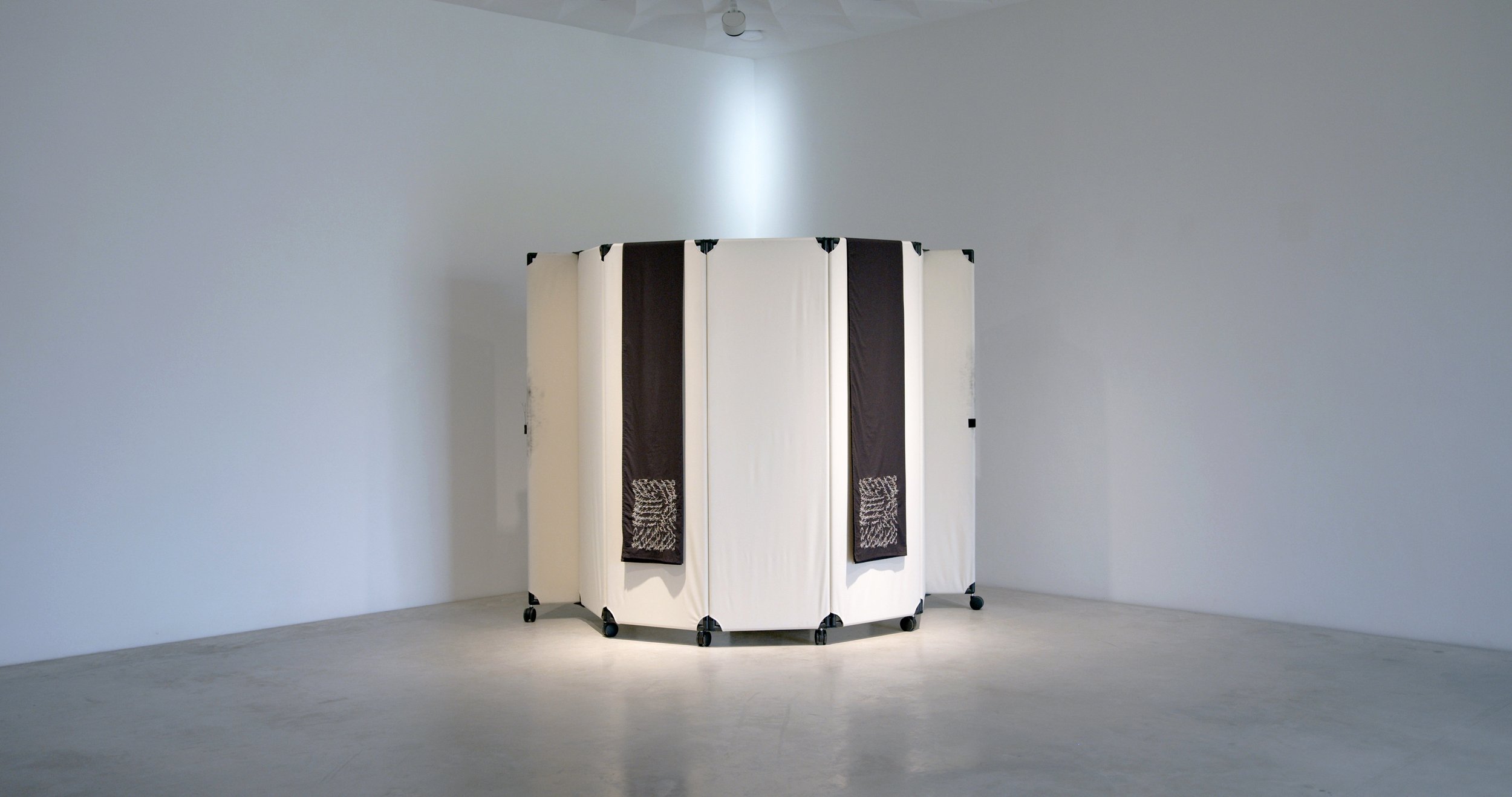
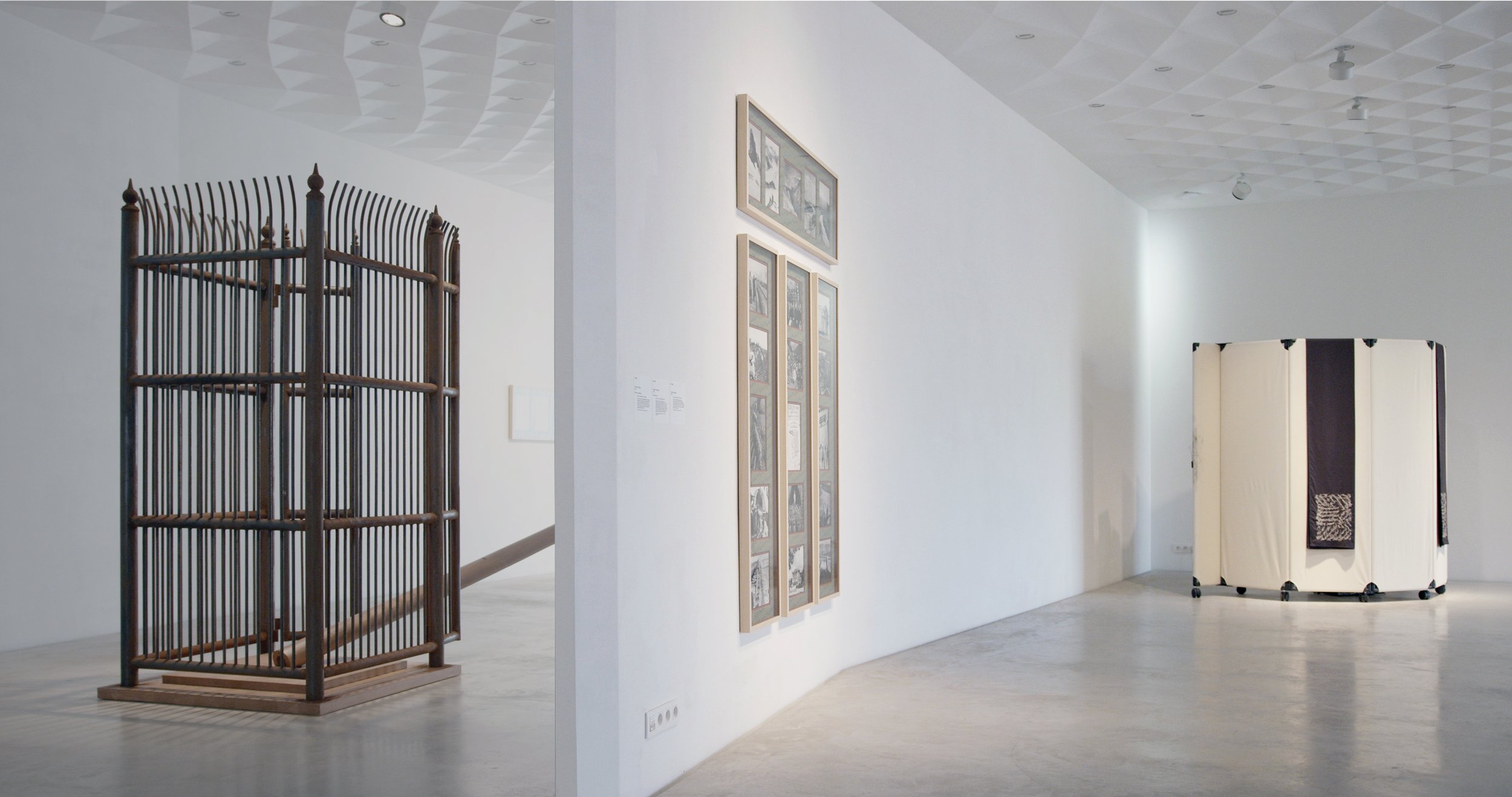

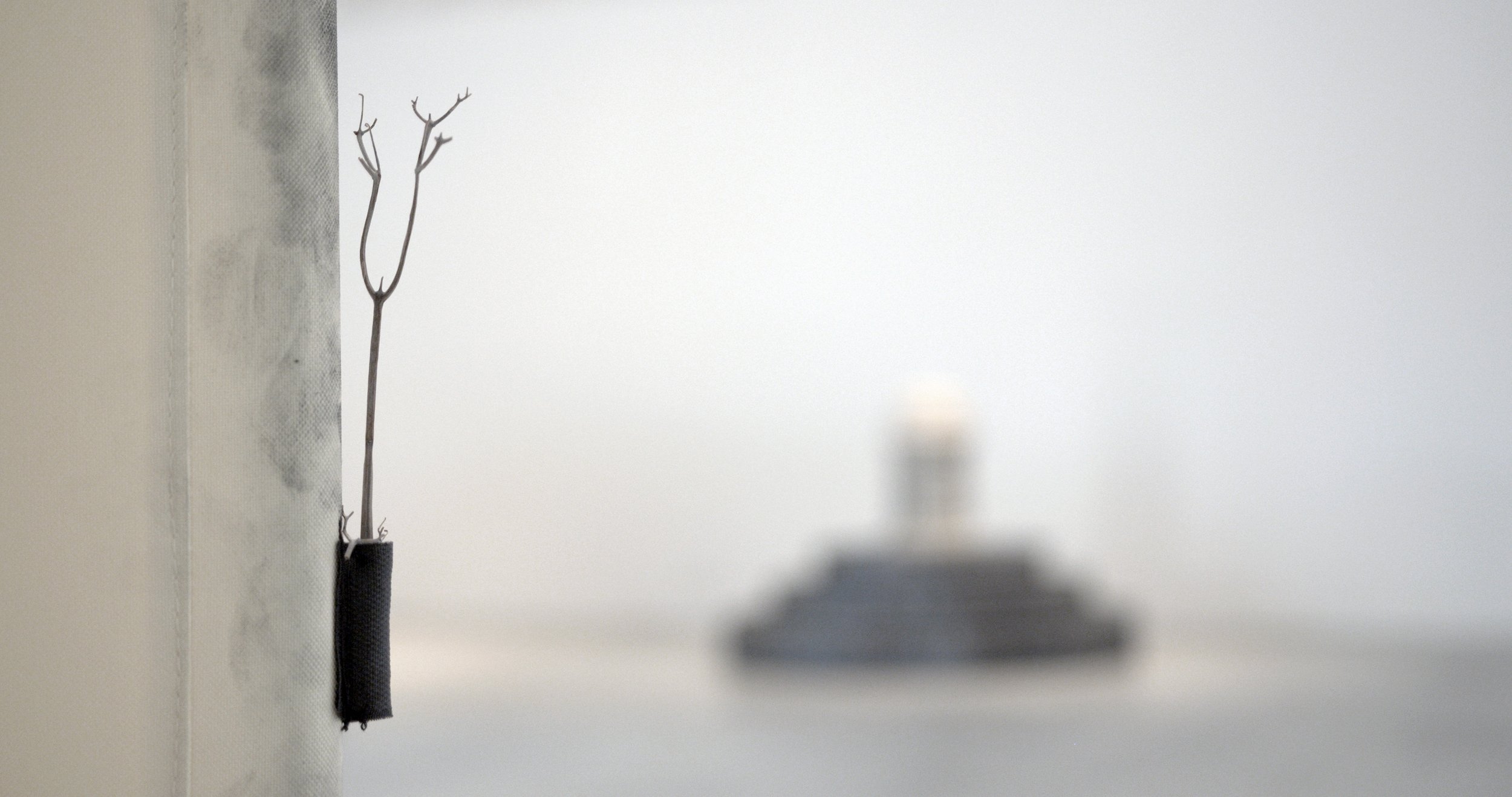
Memories of the Dry House
Embroidered cotton fabric, acoustic partition, speaker, media player, Global Truss system. Story written by Farshad Takavoli and performed by Bahar Modiri.
Memories of the Dry House references Shahr-e-Sukhteh (the Burnt City), once a thriving industrial center in Persia (now Iran). It is widely believed that Shahr-e-Sukhteh was abandoned due to prolonged drought. Recent research suggests that this was caused by the construction of dams further upstream. The story of the Burnt City appears here as an embroidered calligraphy and as a sonic experience. You can occasionally hear a vocal technique called tahrir (melisma) that is inspired by nightingales’ calls.
Works-in-Progress
Risograph prints, upholstered cotton mat board
This set of photographs catalogues water infrastructure projects as part of the expansion of cotton plantations in and around the Ferghana Valley (Central Asia) from the 1930s to the 50s. The works are framed by a Russian cotton lining used in traditional silk robes from the valley.
Courtesy of The Sovfoto Archive, MacLaren Art Centre.
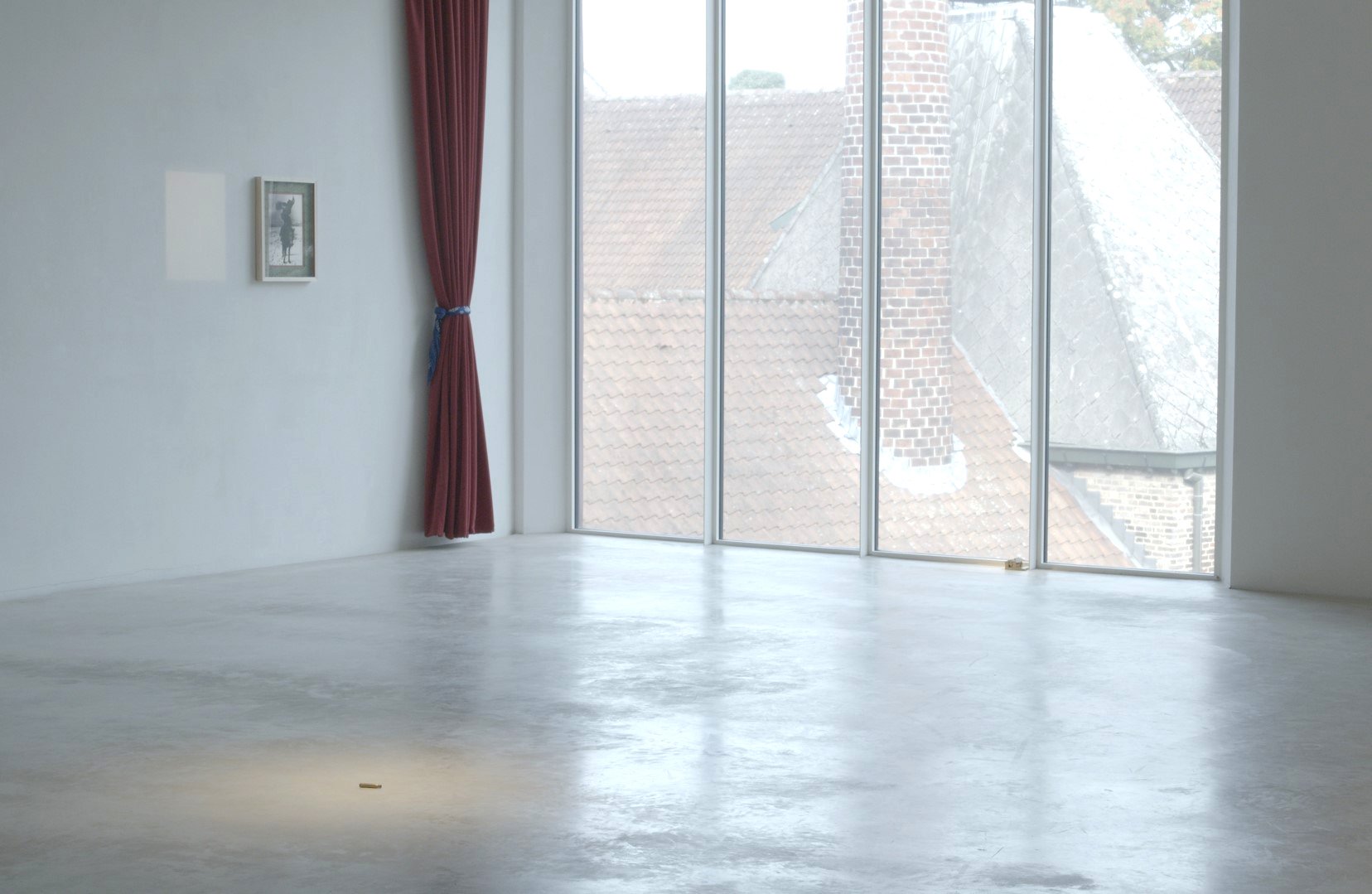
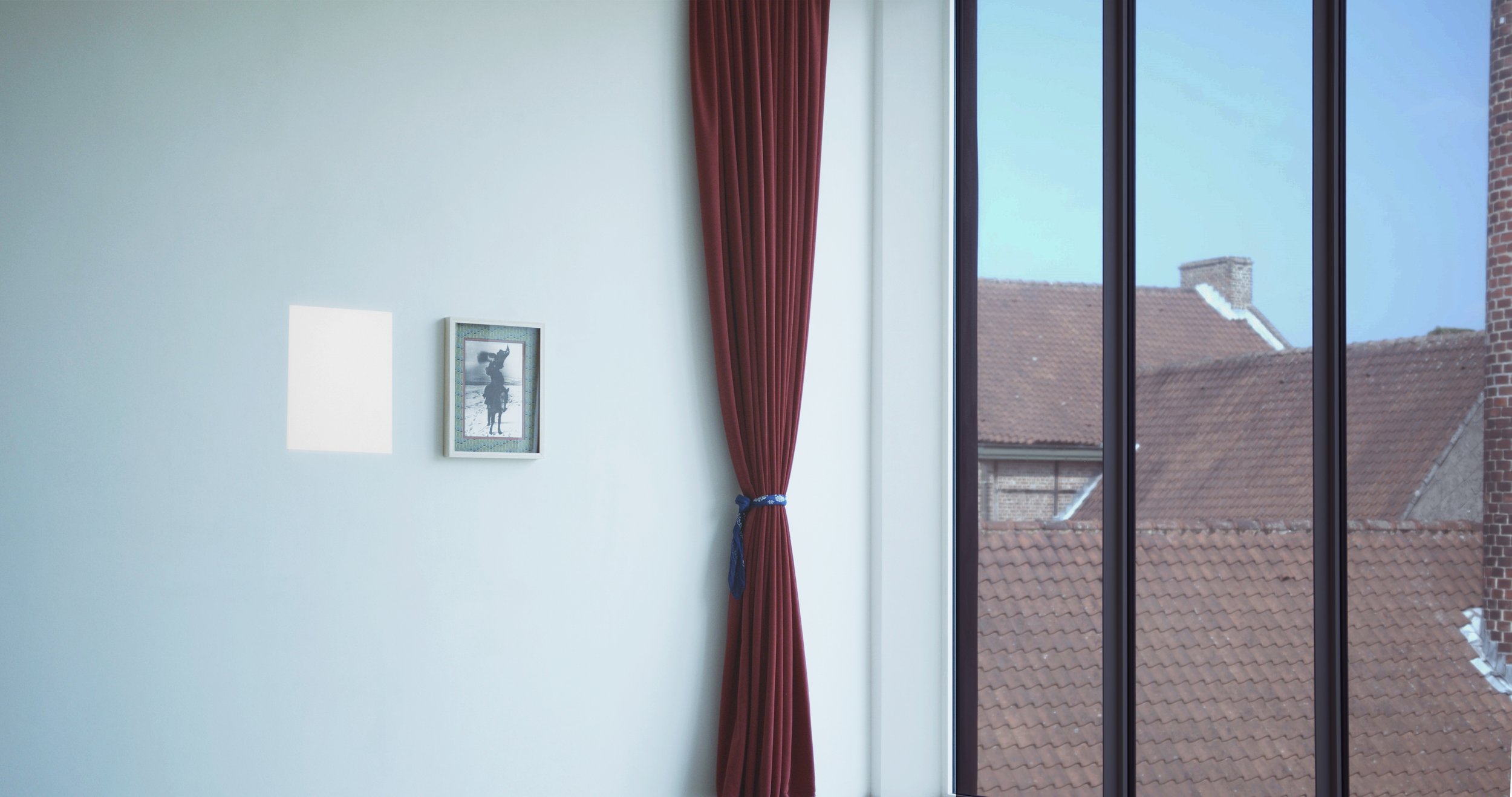
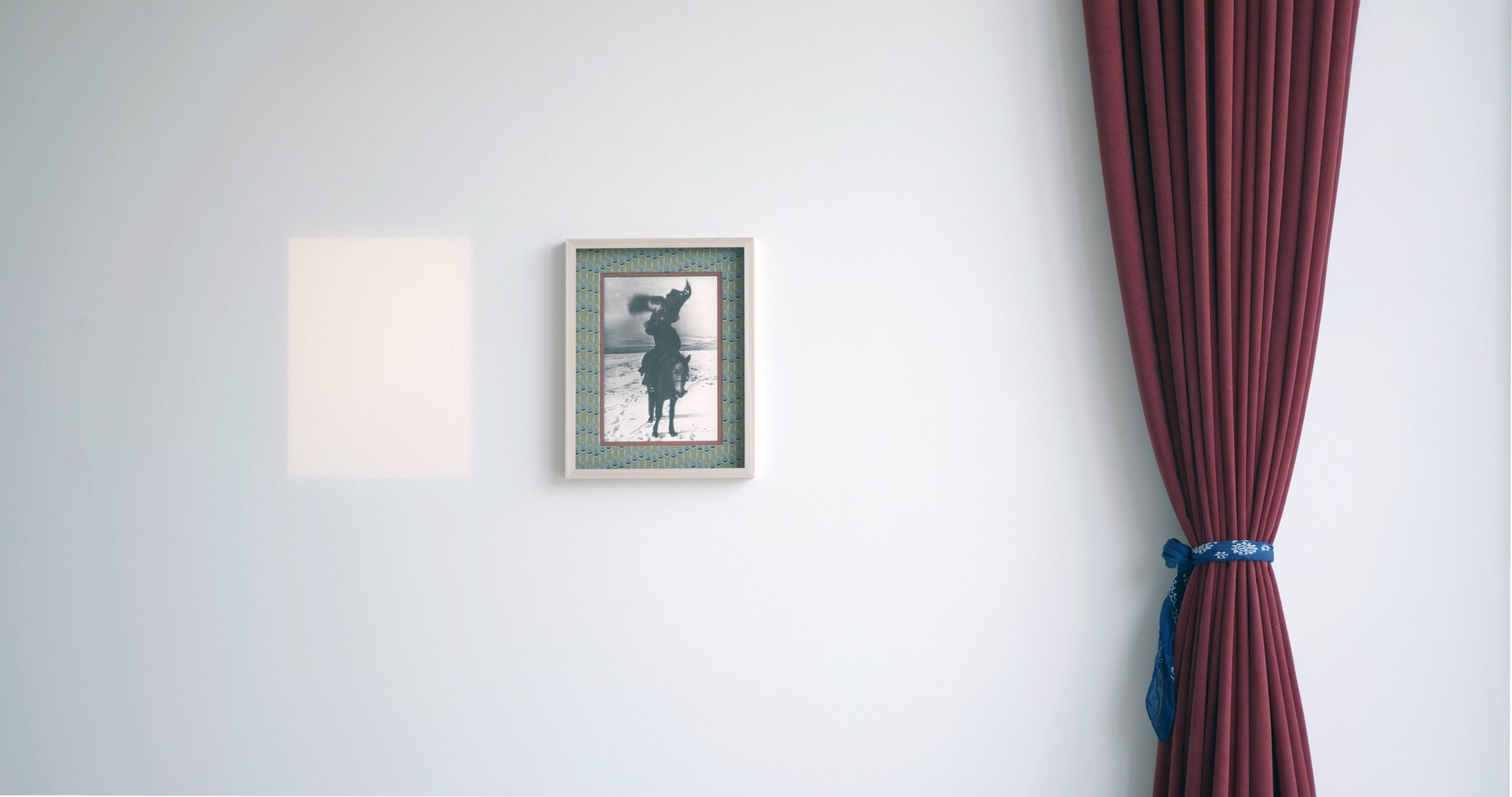

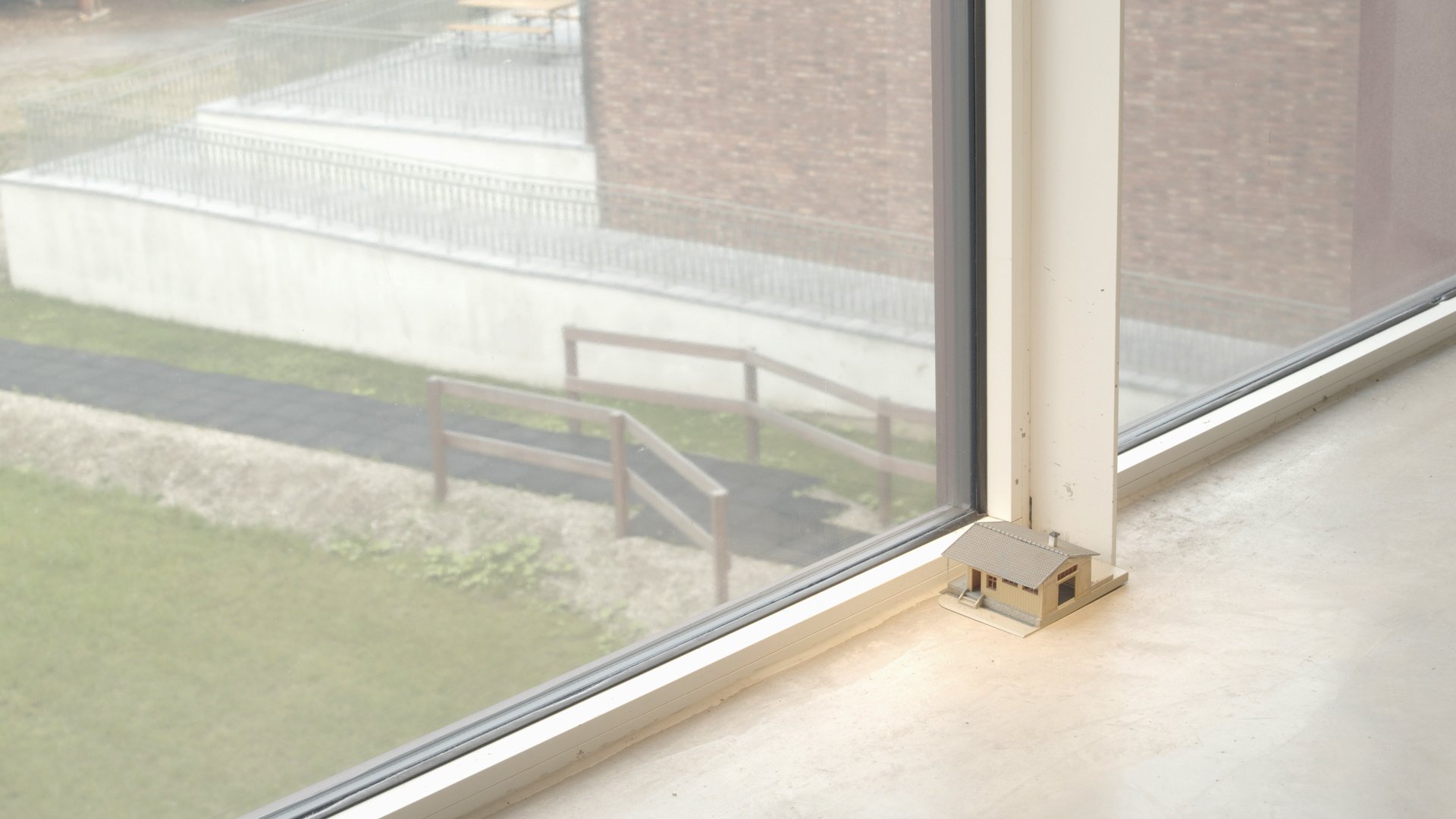

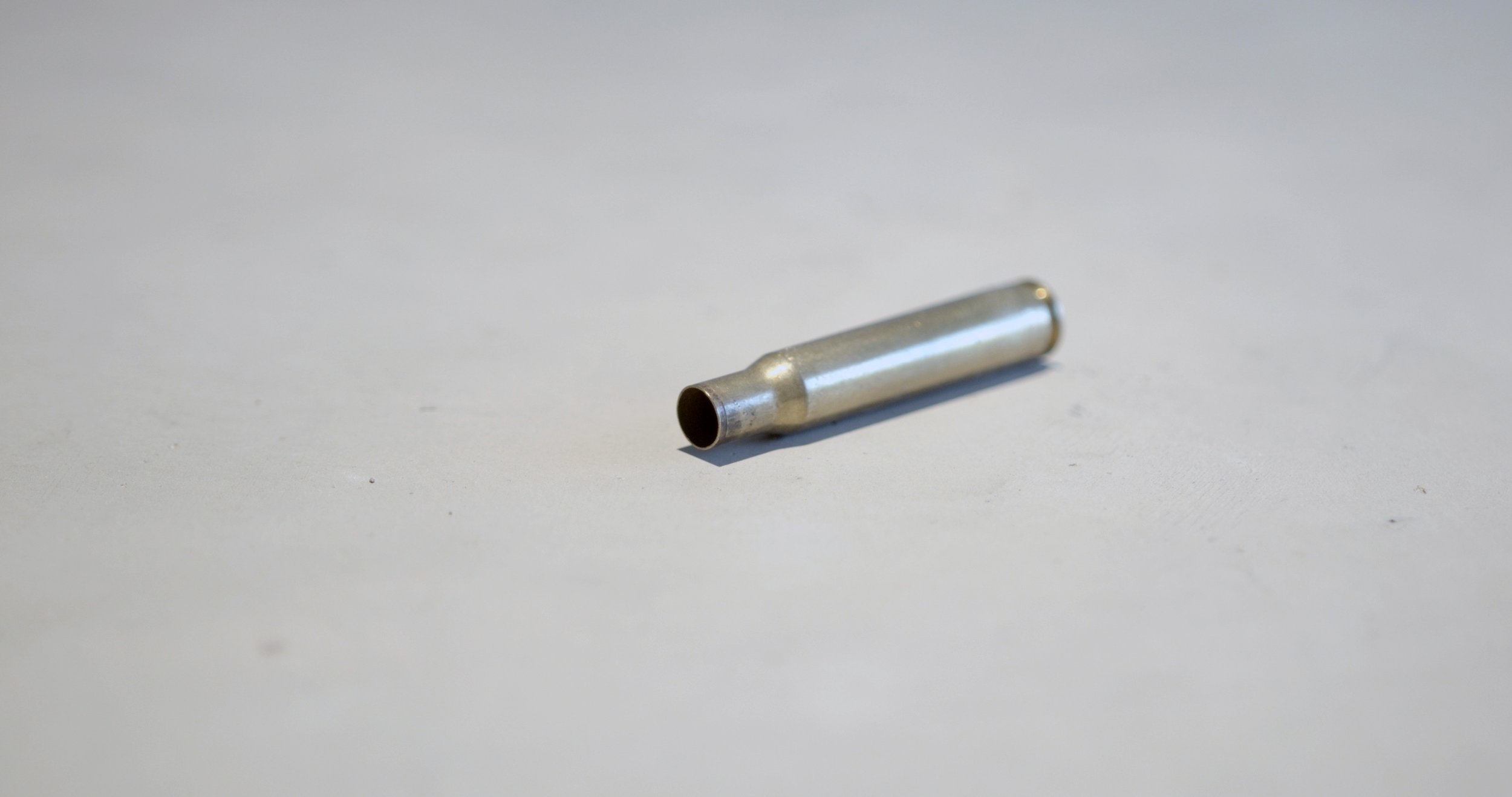
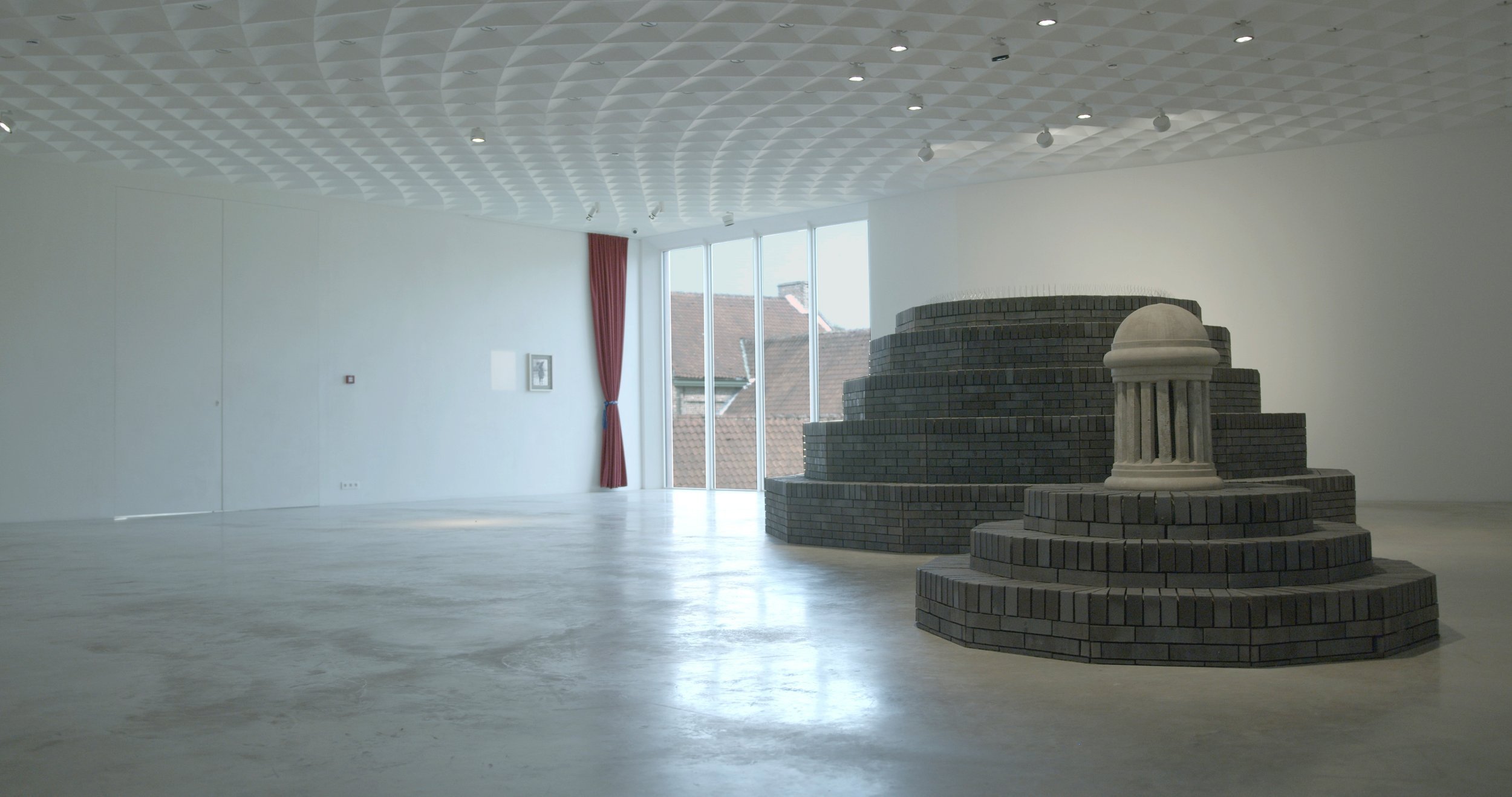
The Great Game
Taxidermy rock pigeon, cyanide, UV light bars, velvet curtain, fiber-based silver gelatin print
On August 4th, 1922 the Ottoman military general Enver Pasha noted in his diary, ‘Today the air is still’.
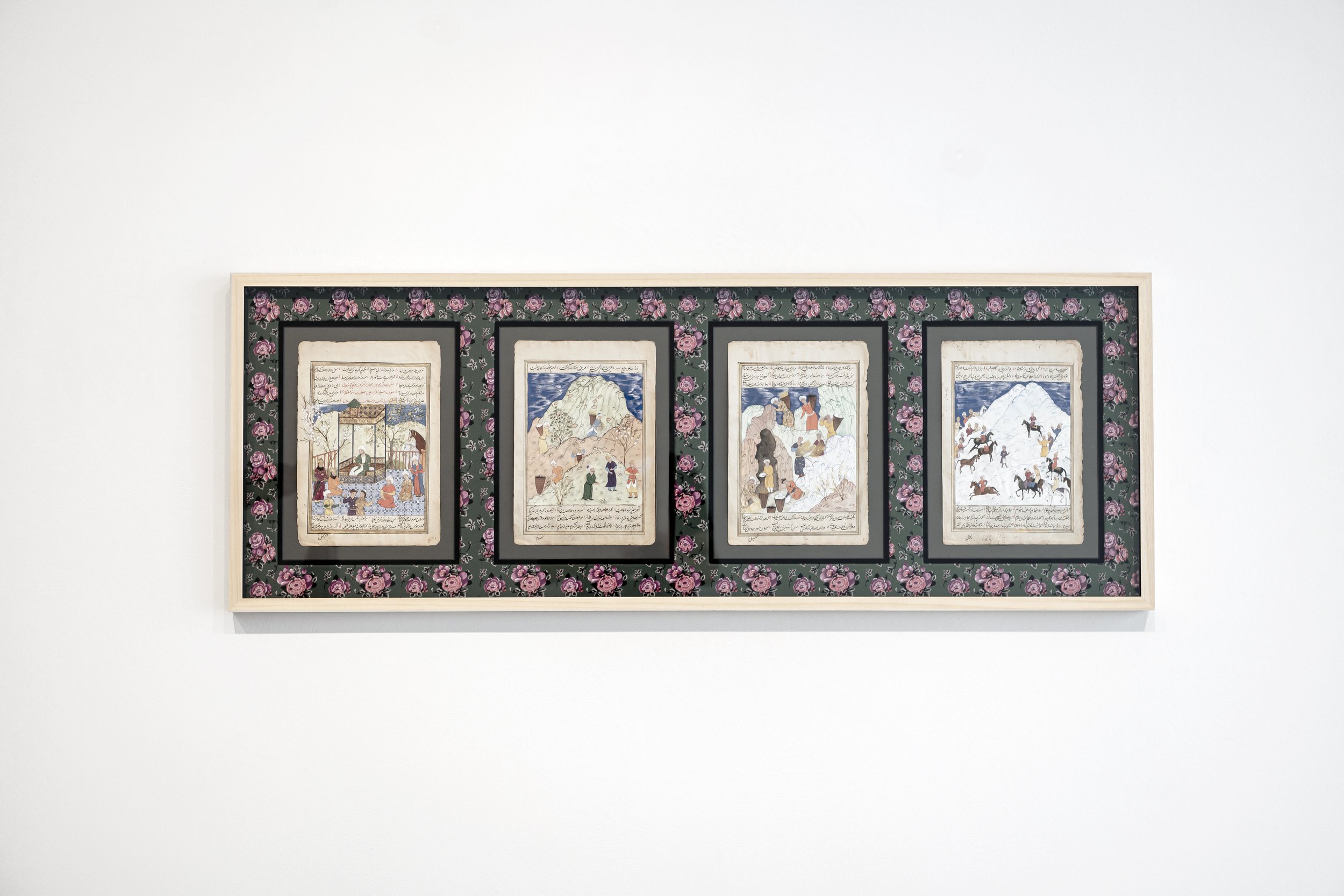
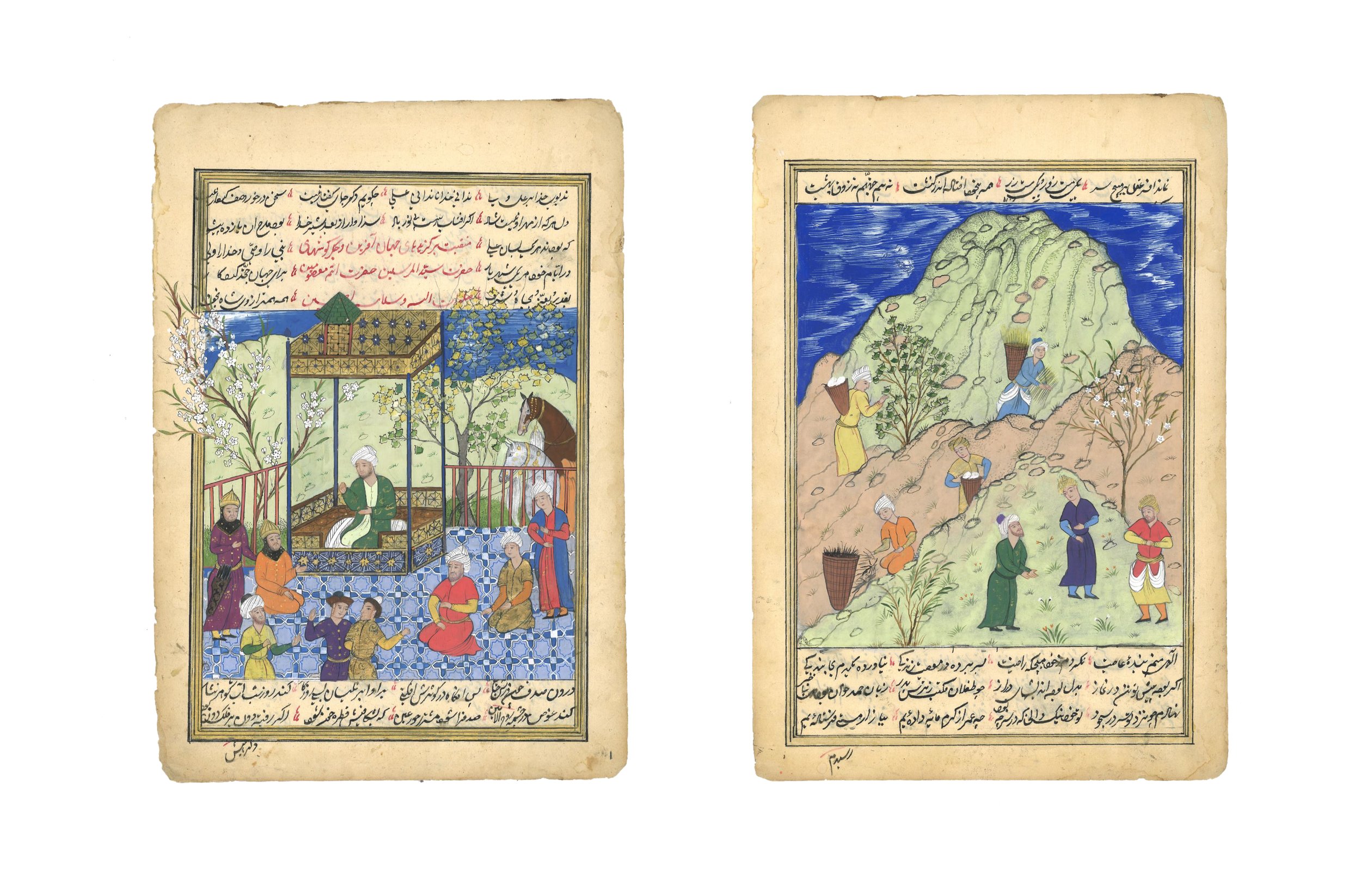
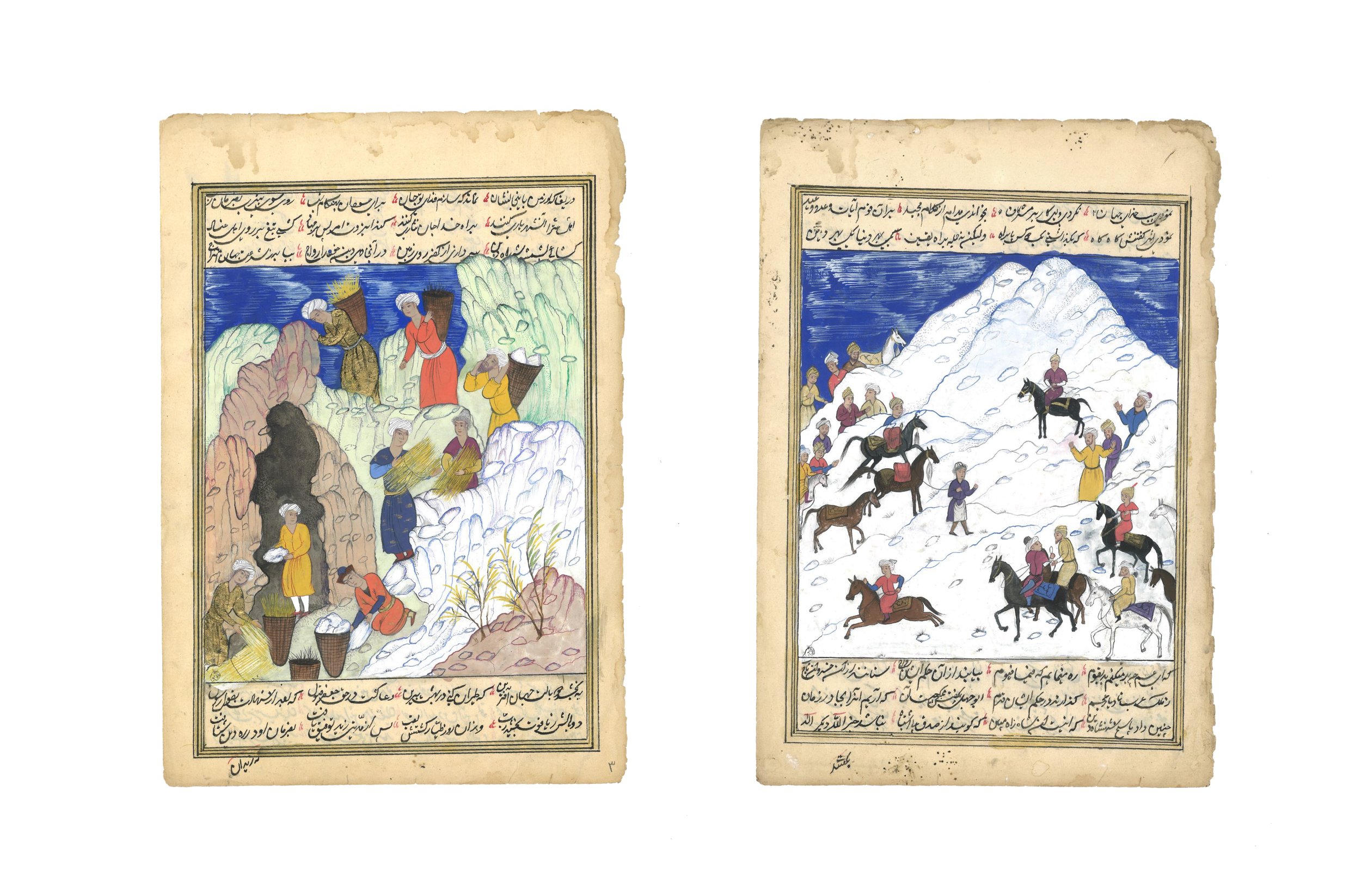
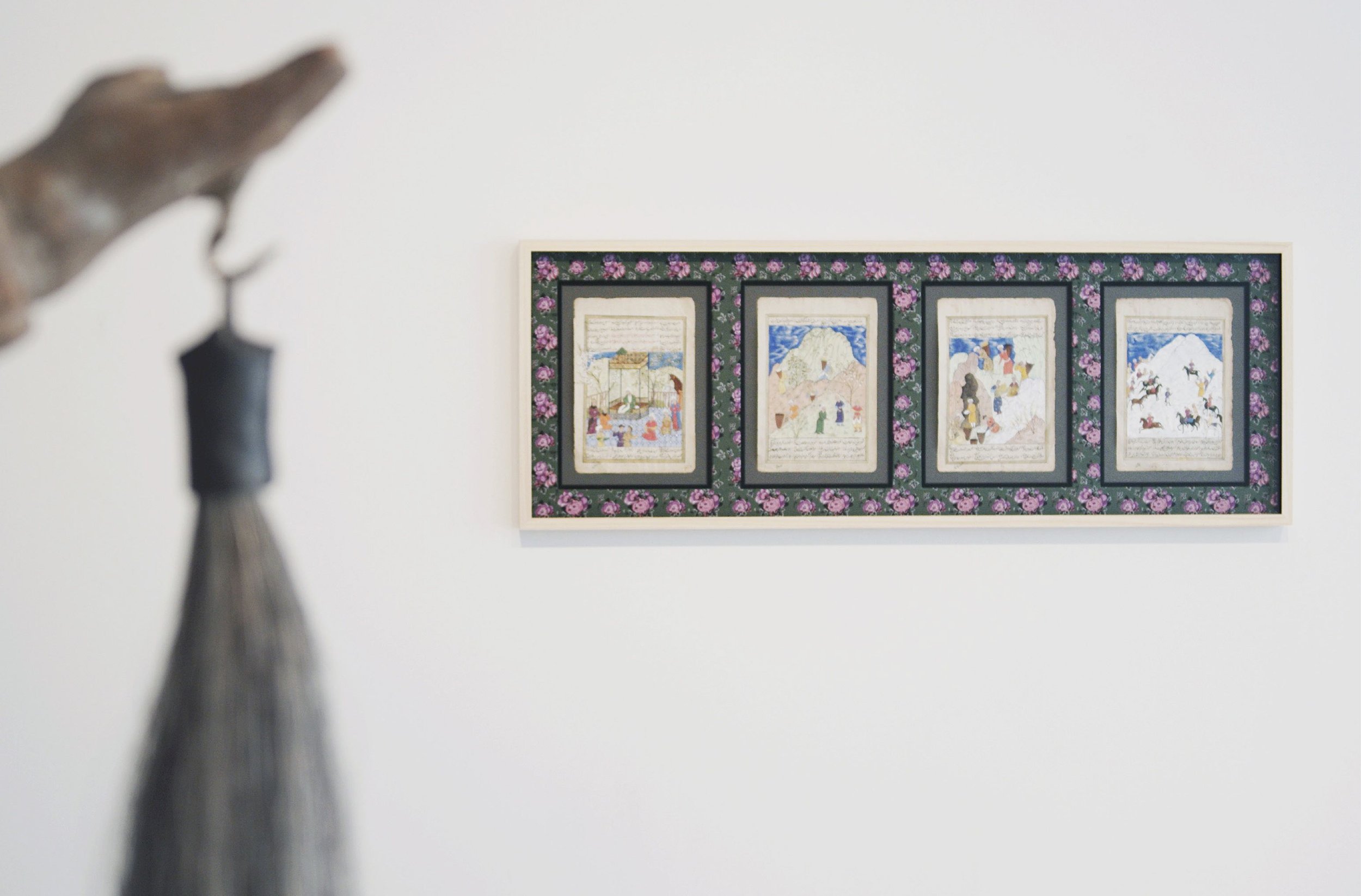
Ficcones
Illuminated manuscript by Mojtaba Abu Talebi, mid-20th century Soviet fabric produced by the VLKSM silk combine in Osh Kyrgyzstan
These miniatures retell the legend of Amir Kabeer Hamadani (c. 1314–1384), a Persian theologian who is said to have introduced the practice of glacier-growing in Ladakh and Baltistan (Northern India) as a method to block mountain passes from Kashgari raiders. Legend has it that the expansion of Genghis Khan’s Mongol Empire came to a temporary halt when his army was faced with one such artificial glacier.
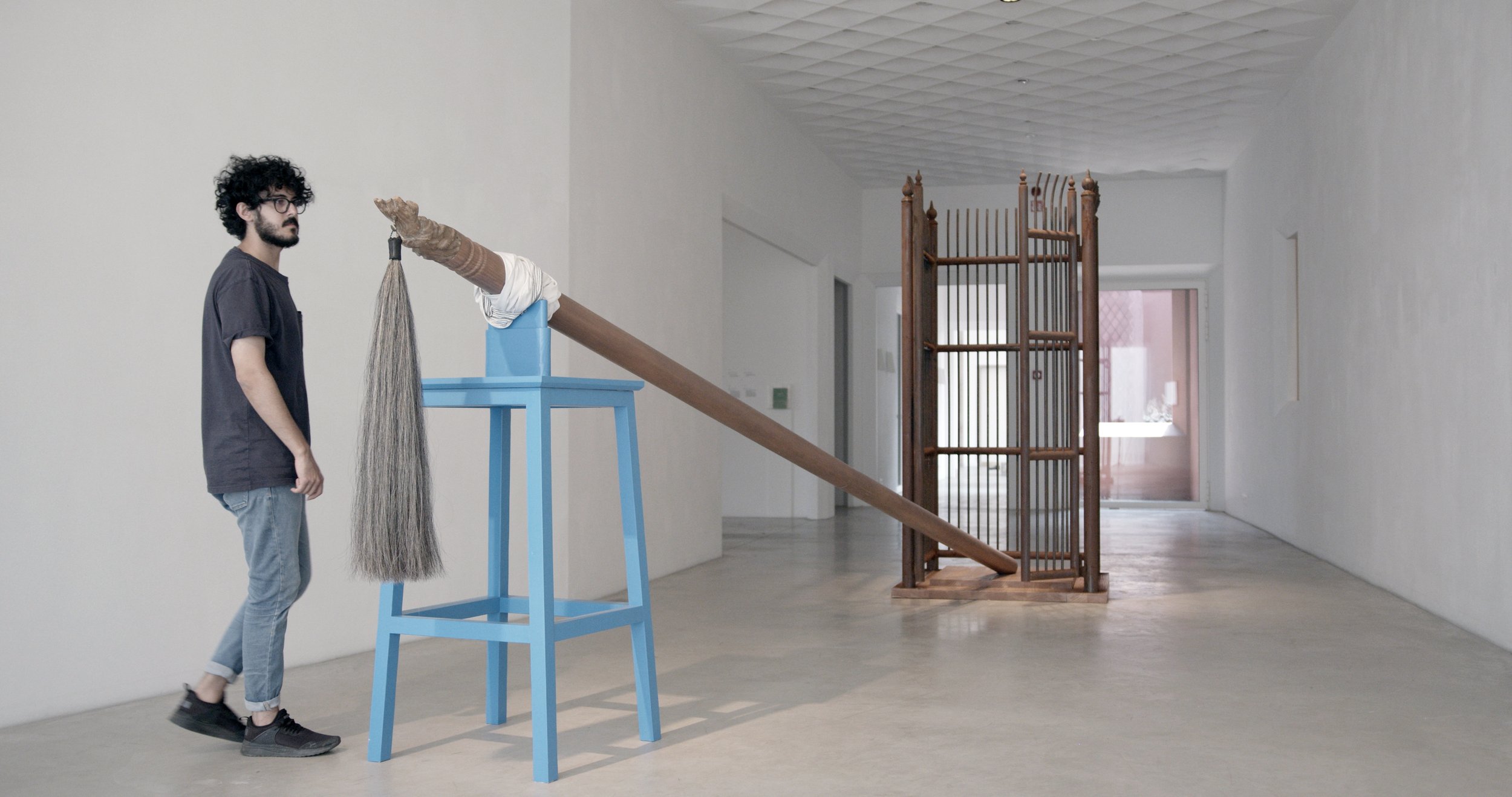
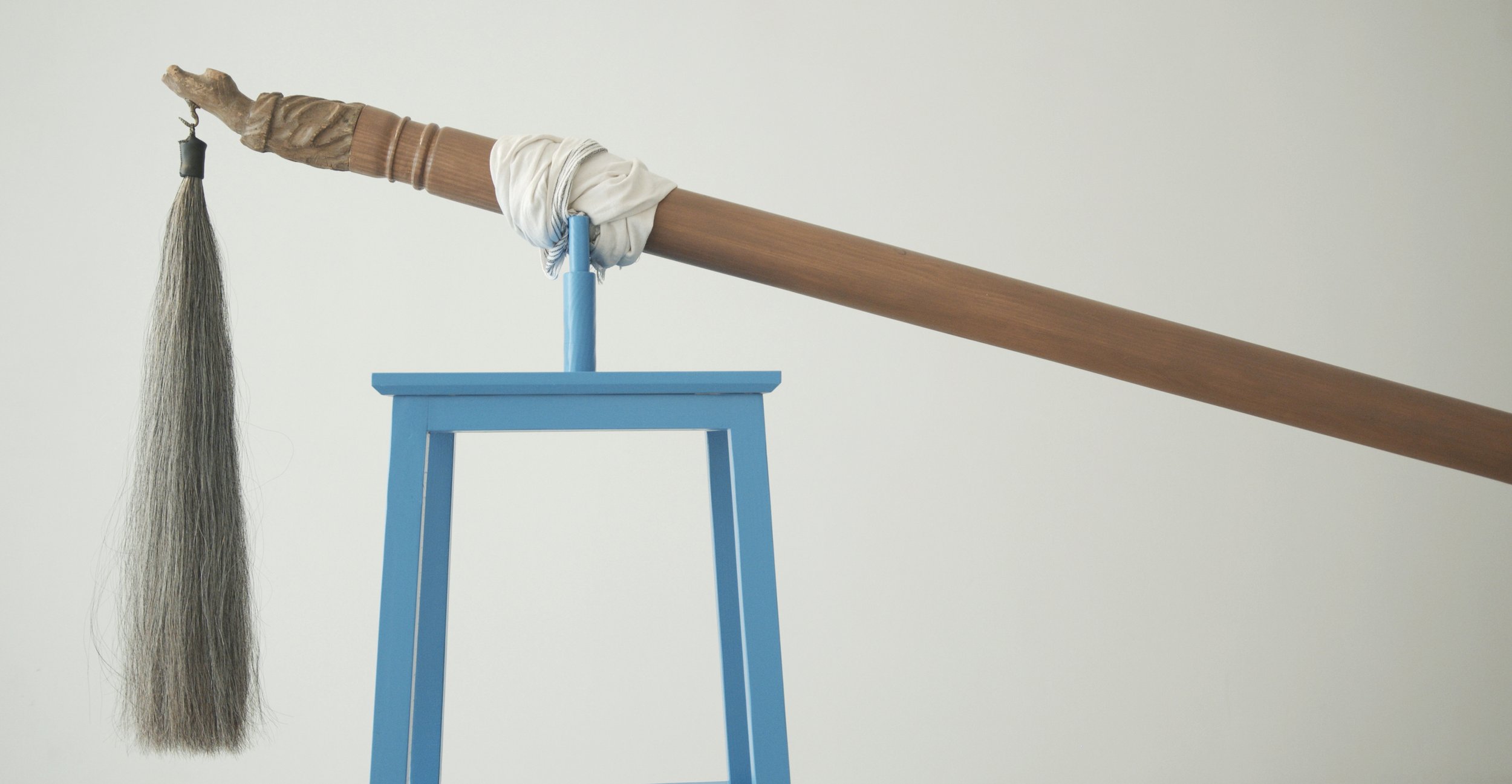
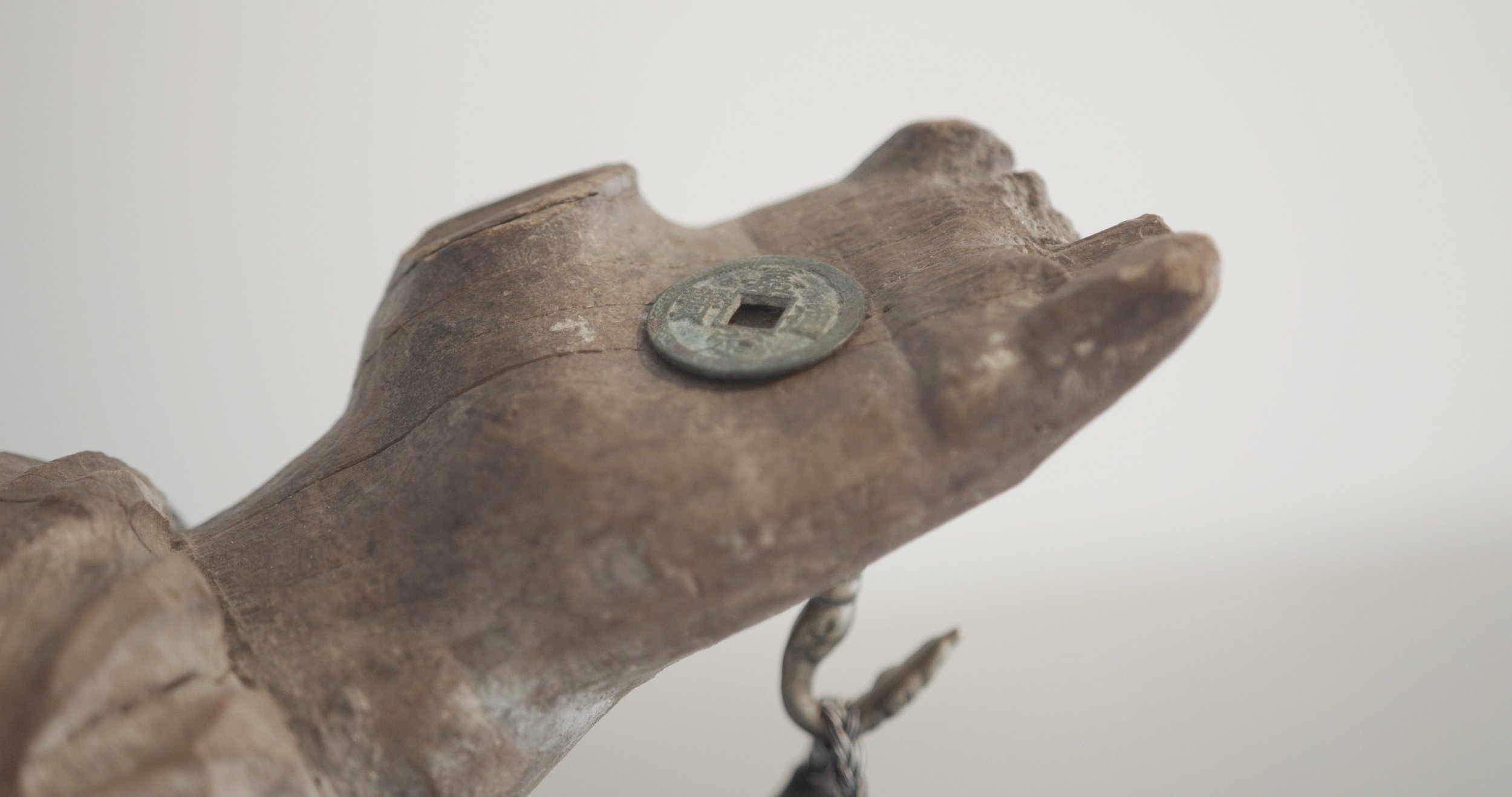
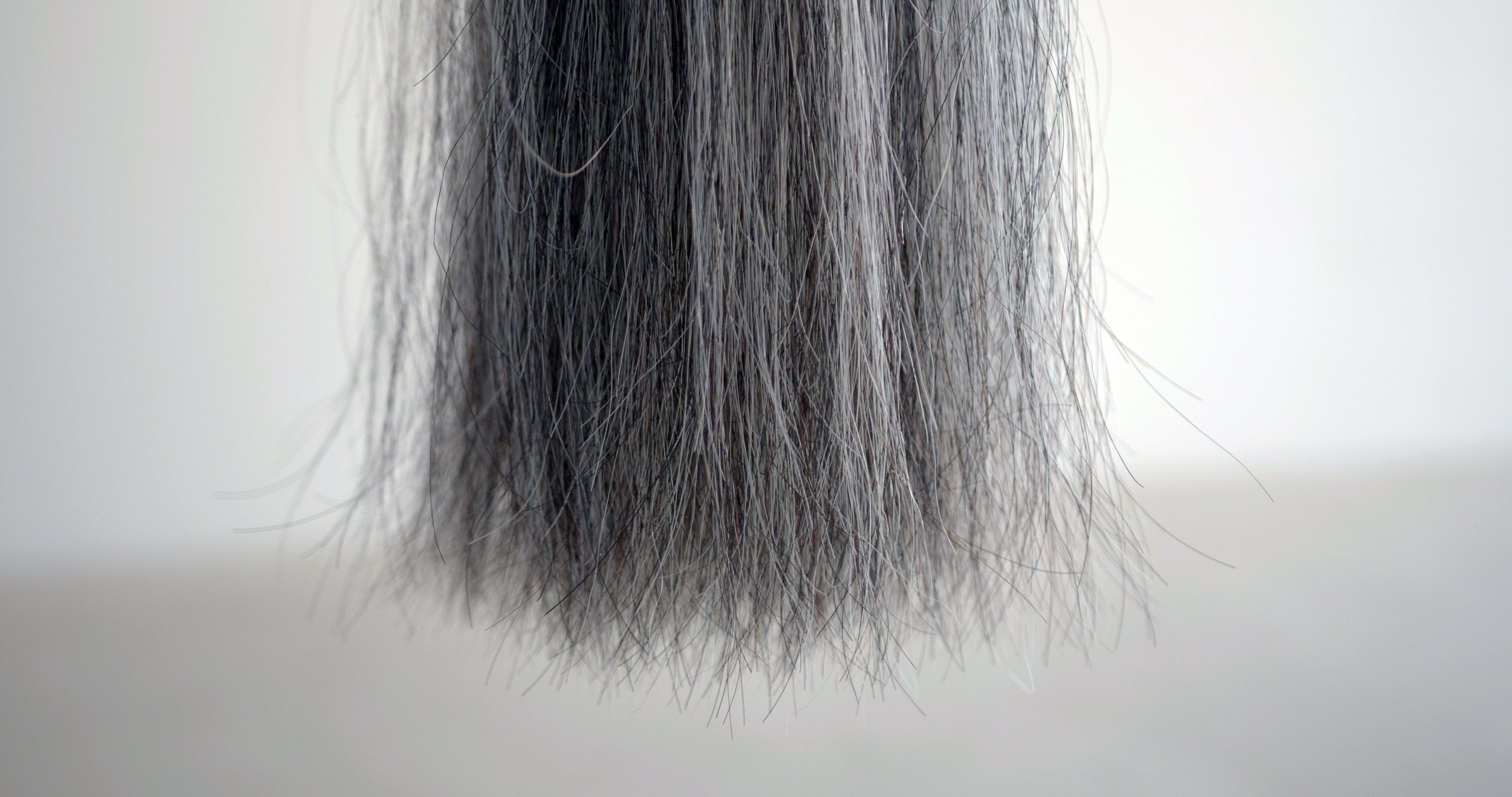
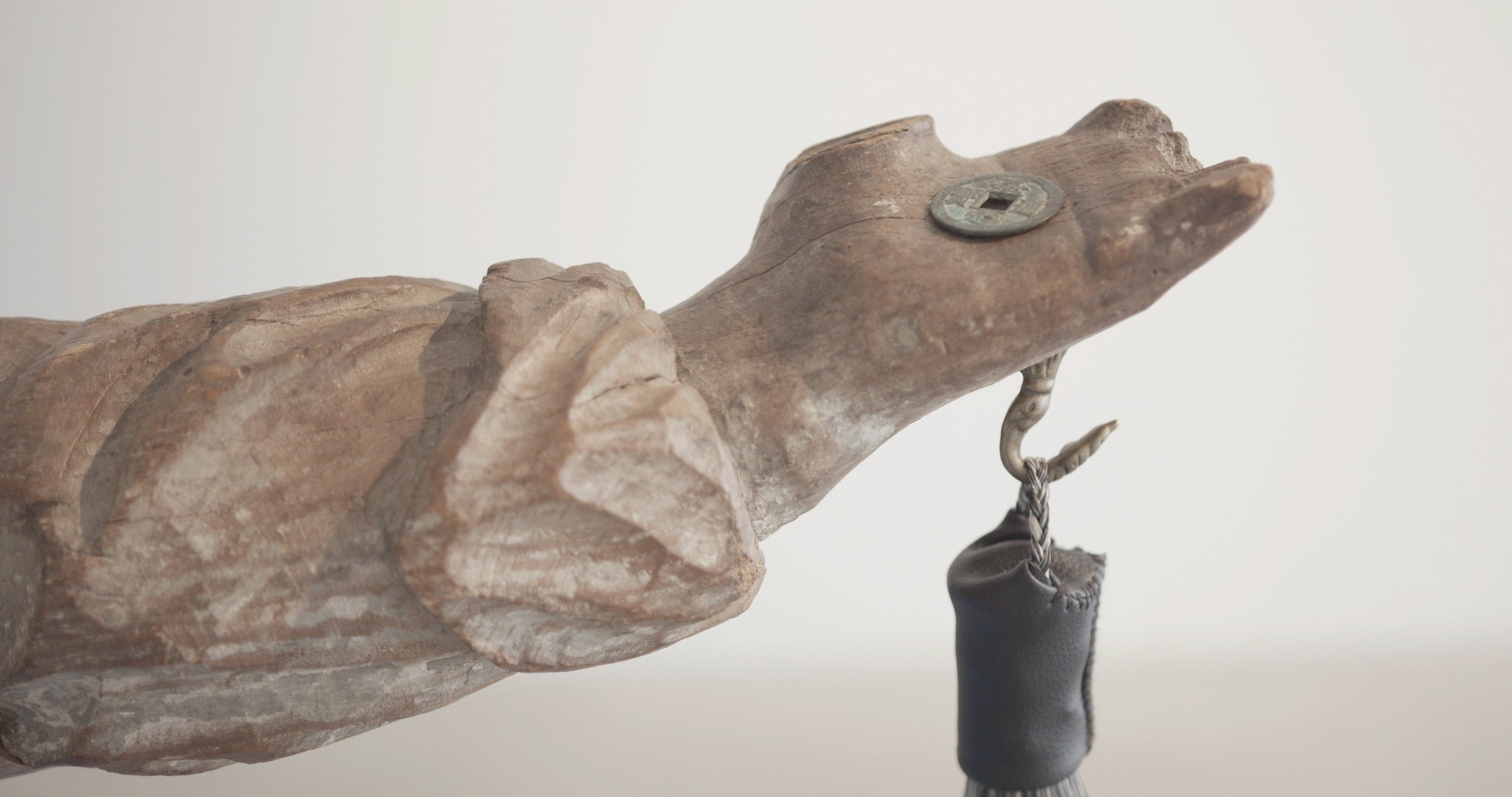
The Wetting
Steel, gun blue, wood, horsetail, Yuan Dynasty-minted coinage, fragment of 12th century Frankish statue
The Wetting refers to the military expansion of the Mongol Empire during the Little Ice Age. A global drop in temperature lowered the snow line in the mountains of Asia and expanded Siberian glaciers. This resulted in the rapid transformation of arid and impassable regions into pastureland, which provided the sustenance necessary for the Mongolian cavalry. The design of The Wetting references the Turkic practice of memorializing fallen warriors by erecting a pole with the deceased’s horse’s tail affixed to it.
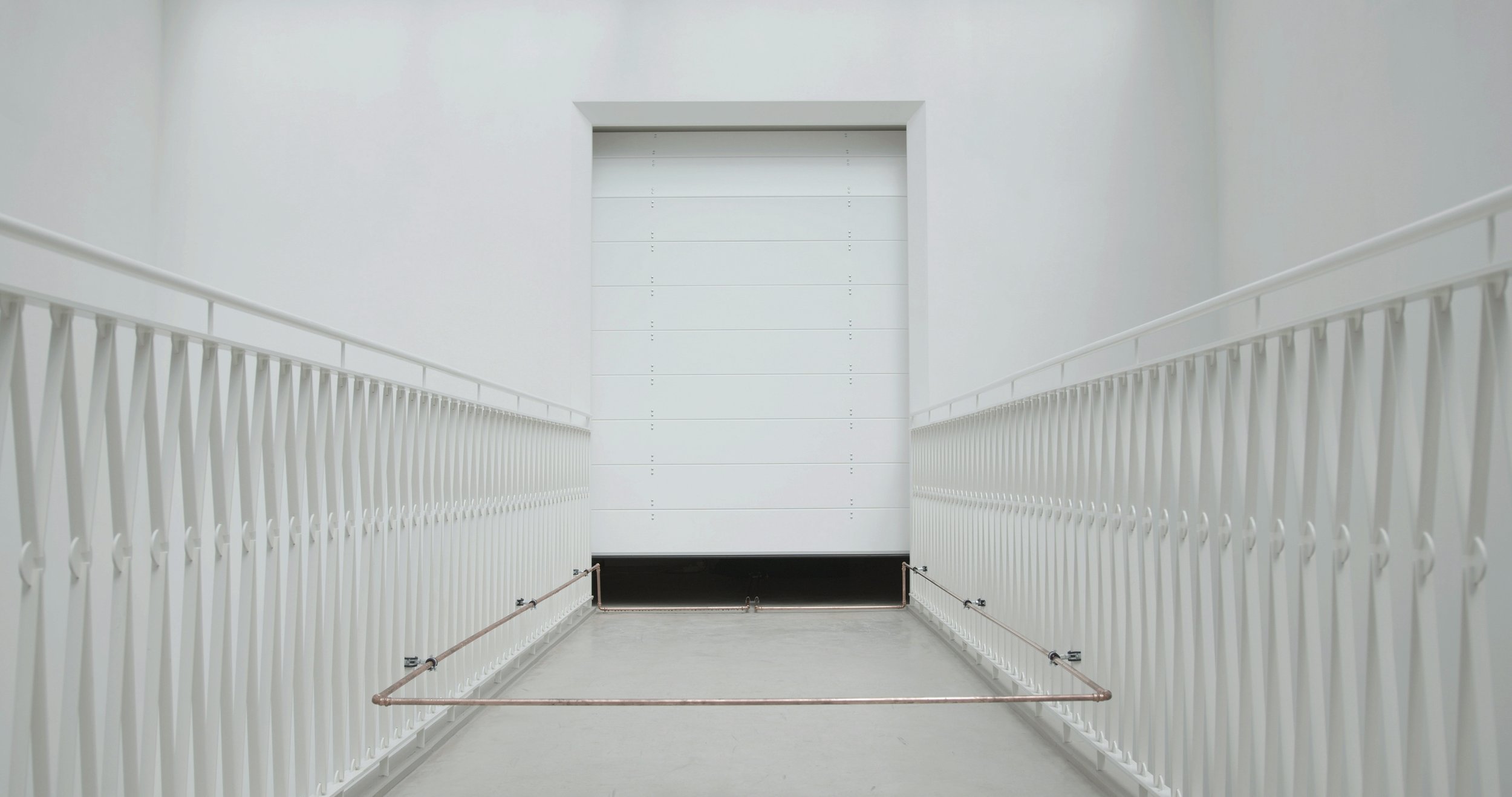

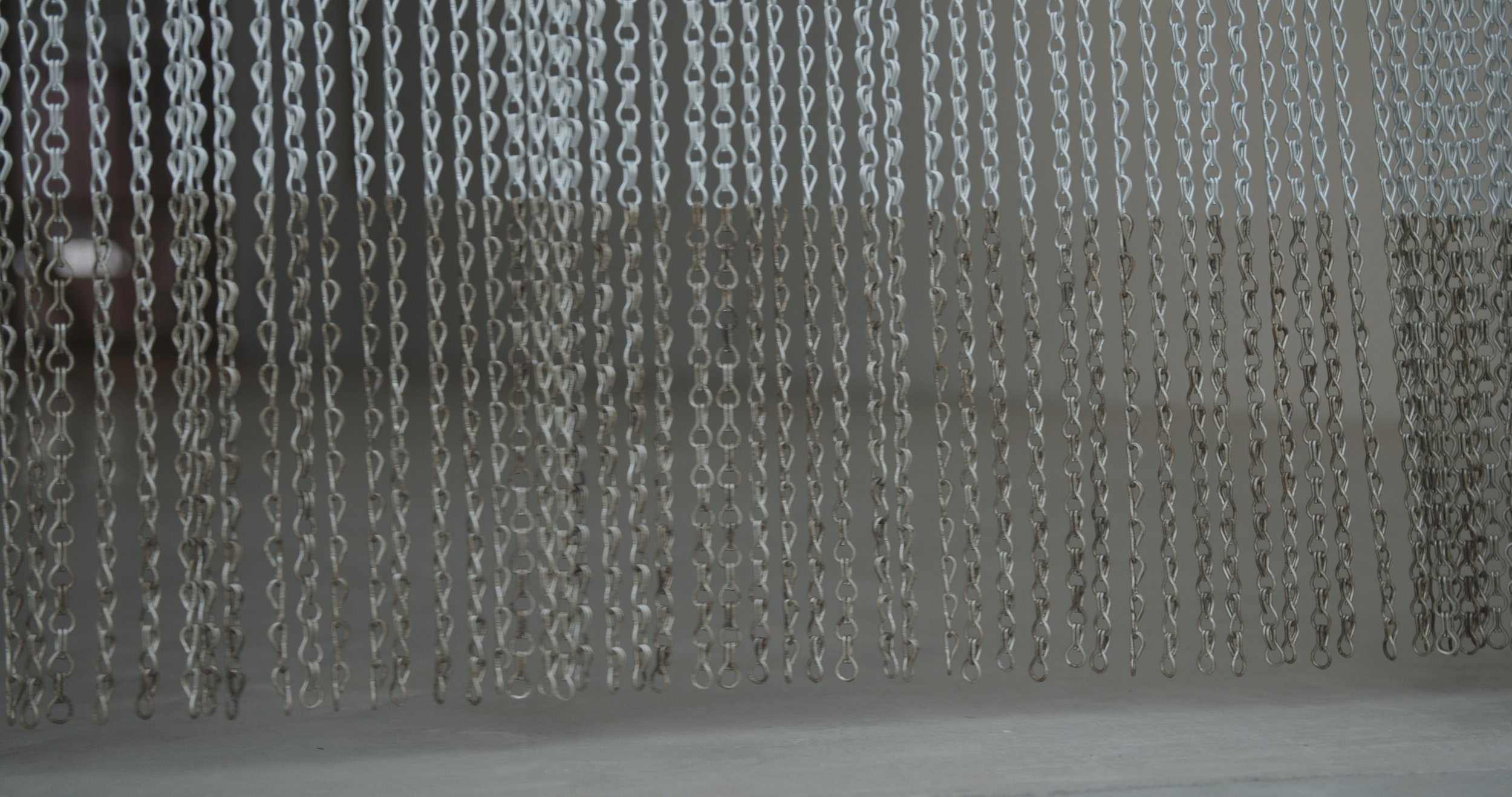
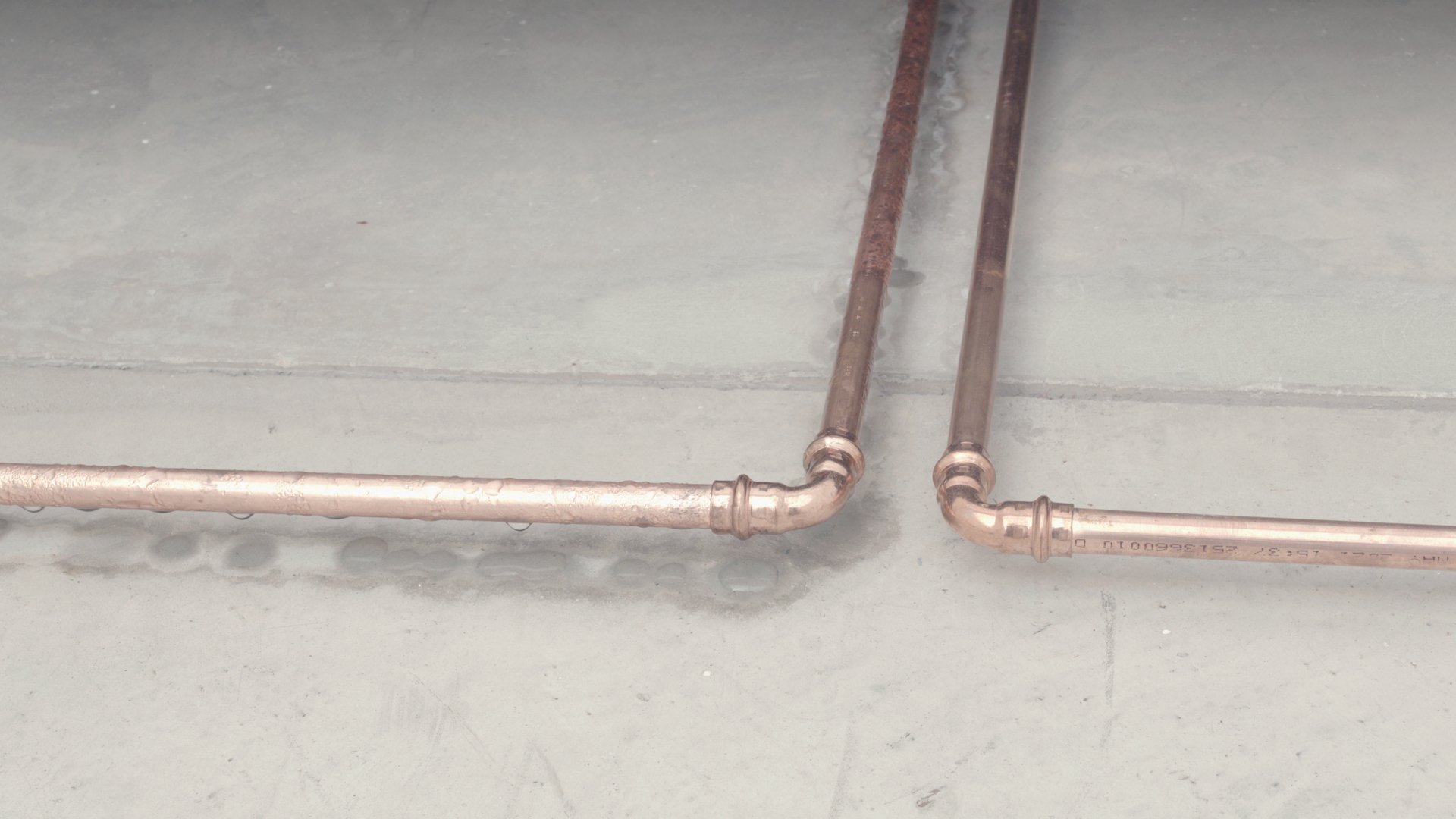

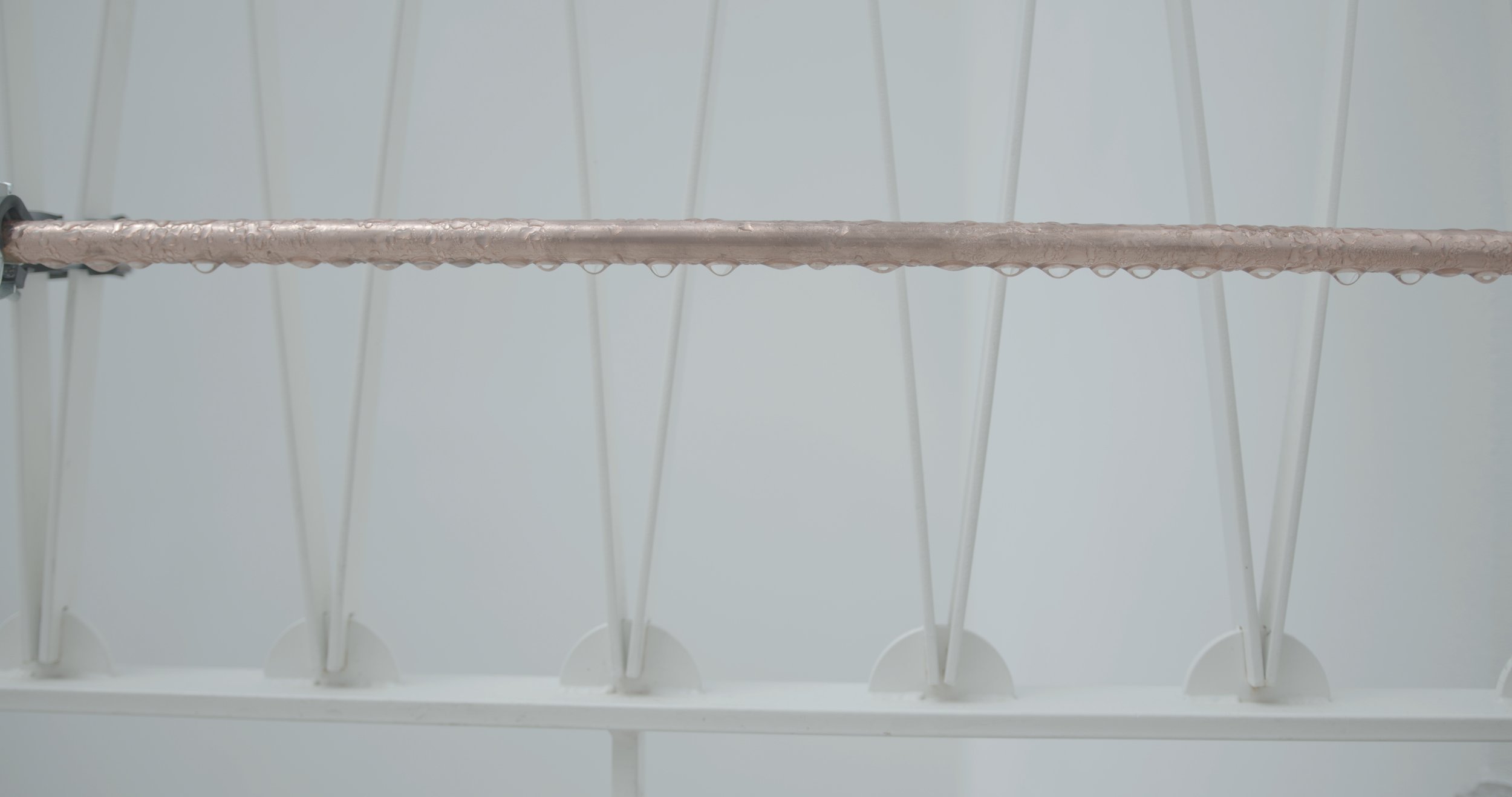
Cold-Chain Logistics
Industrial freezer, copper pipes, antifreeze liquid, truck door, vinyl, aluminum chain, patina
In this work, the freezer technology specific to cold-chain logistics is utilized to freeze over the bridge, blocking the passage of the viewers.
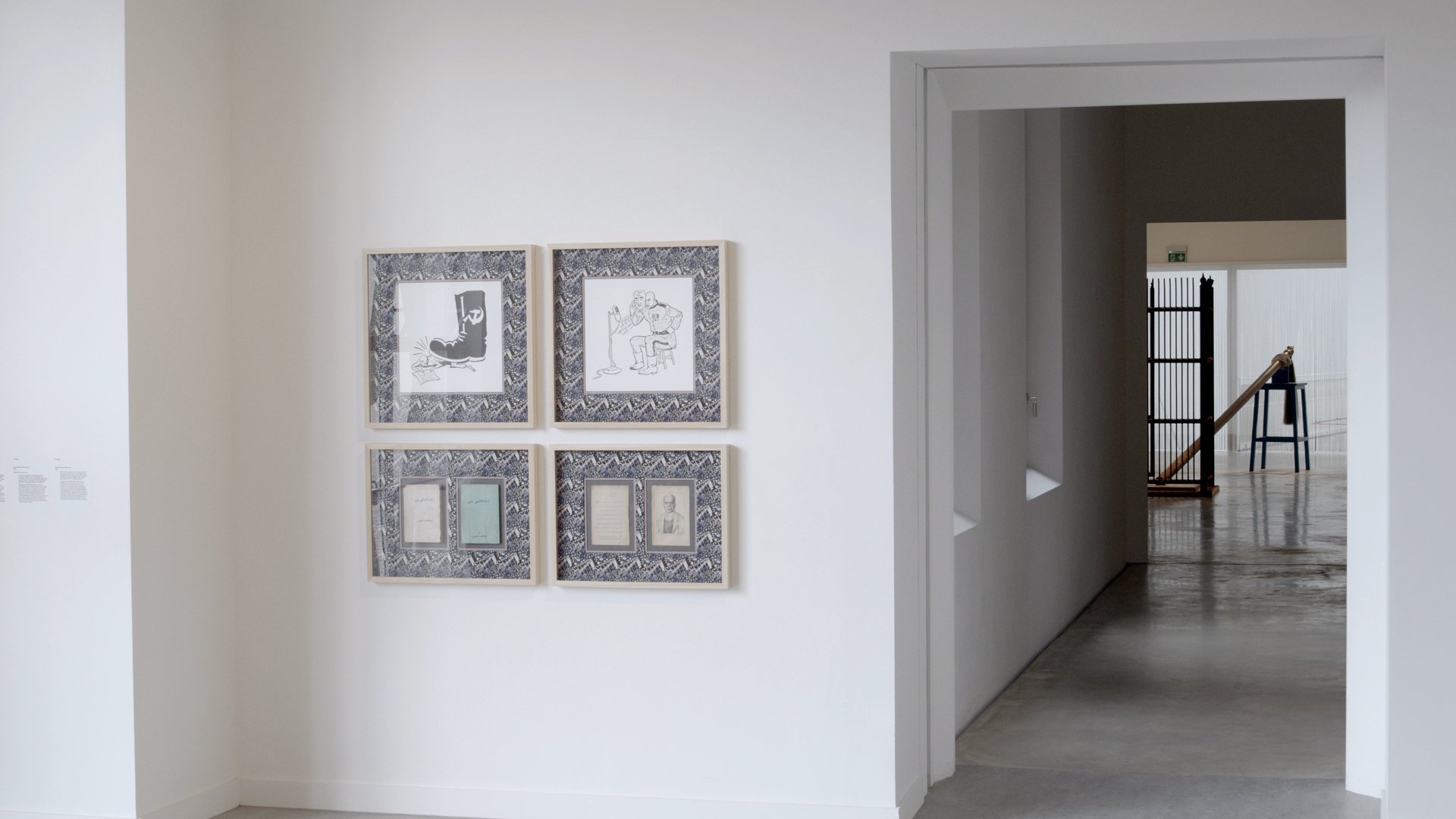
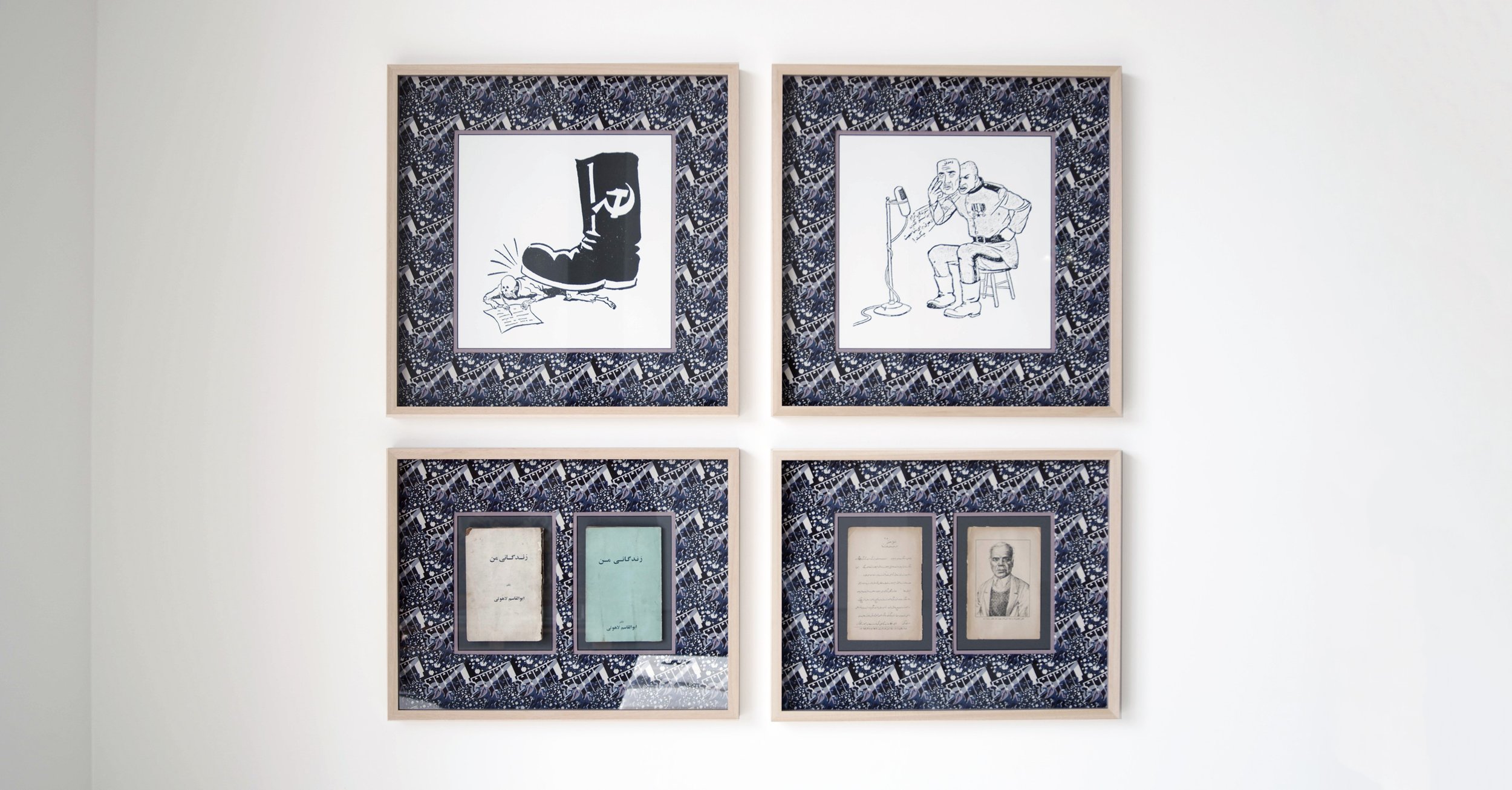
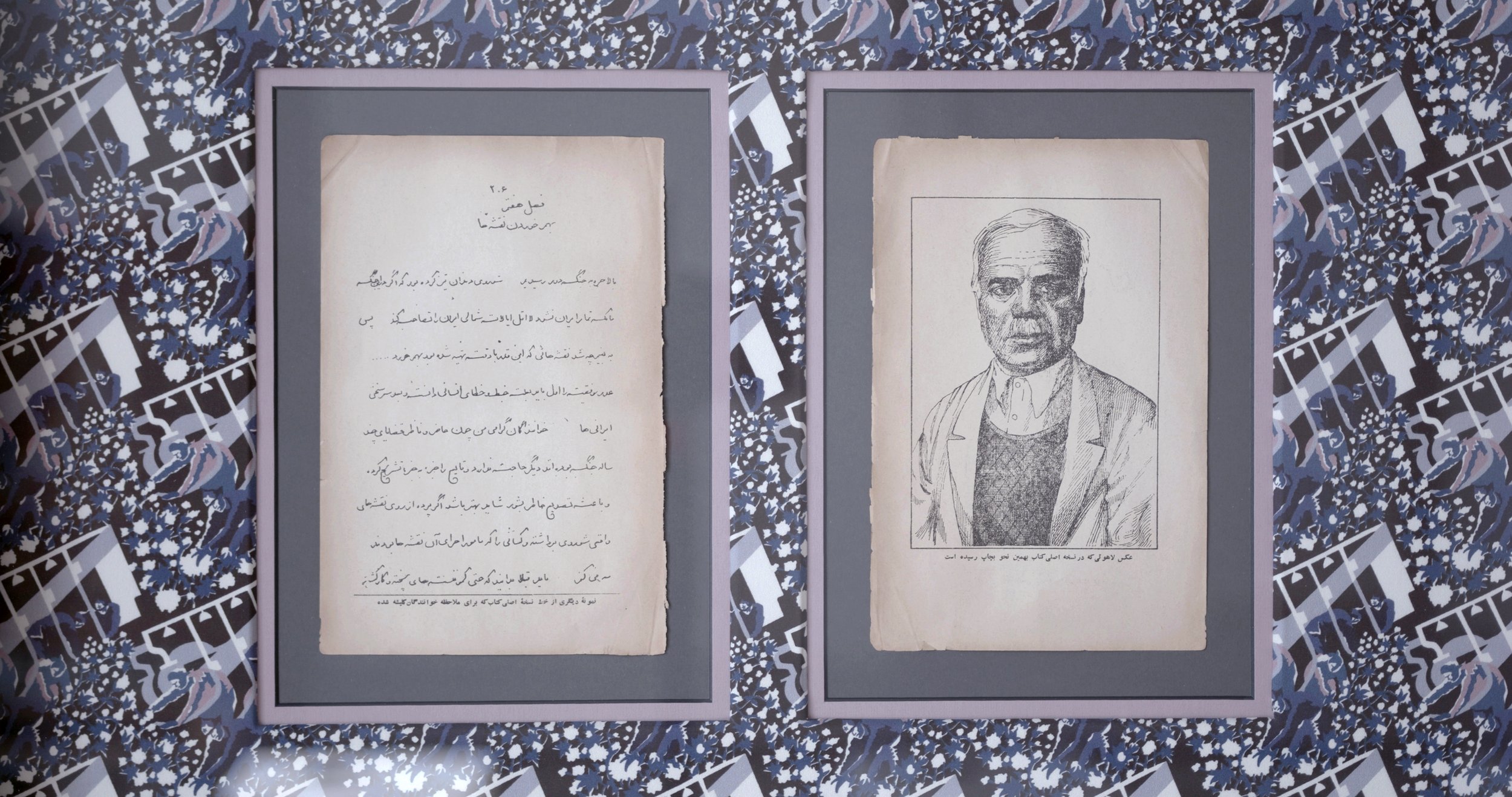
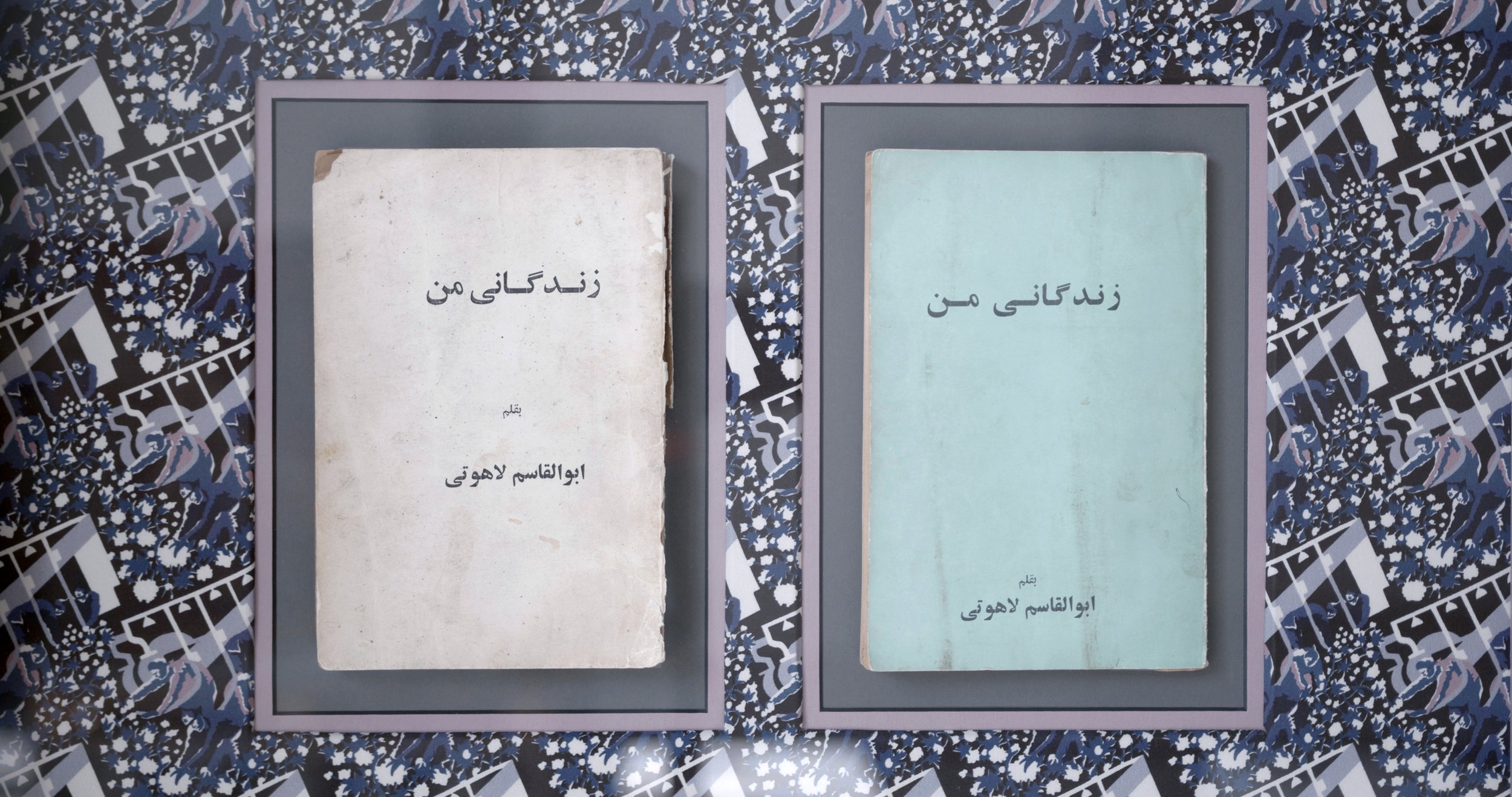
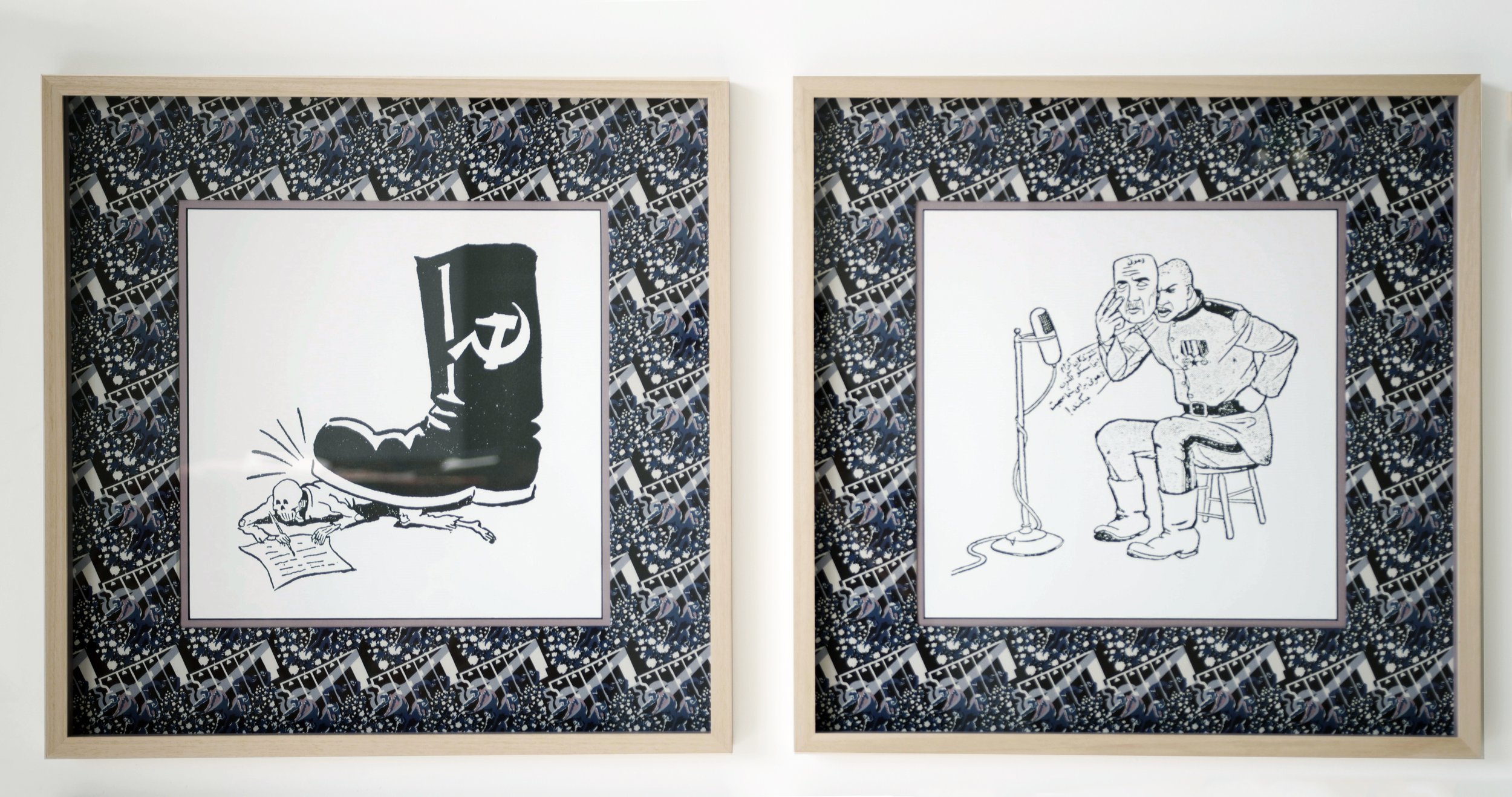
Descriptions of My Life
Book attributed to Abulqasim Lahuti (‘Descriptions of My Life’, CIA version, 1953), book written by Abulqasim Lahuti (‘Descriptions of My Life’, genuine version, 1956), risograph reproductions of Farman newspaper (issue 572 of October 1953), printed cotton with an agitprop pattern by Maria Nazarevskaya with cotton-harvesting machines
Abulqasim Lahuti (1887-1957) was an Iranian poet and communist revolutionary who fled to the Soviet Union in 1922. When the CIA grew worried that Lahuti might lead a Soviet takeover of Iran, they commissioned a fake autobiography. Although Lahuti denounced the falsely-attributed autobiography, the Iranian propaganda newspaper Farman continued to spread rumors and cartoons with false information about the poet. When Farman was called out by the Soviet ambassador in Iran, they published another caricature accusing the ambassador of trampling on journalistic freedoms.
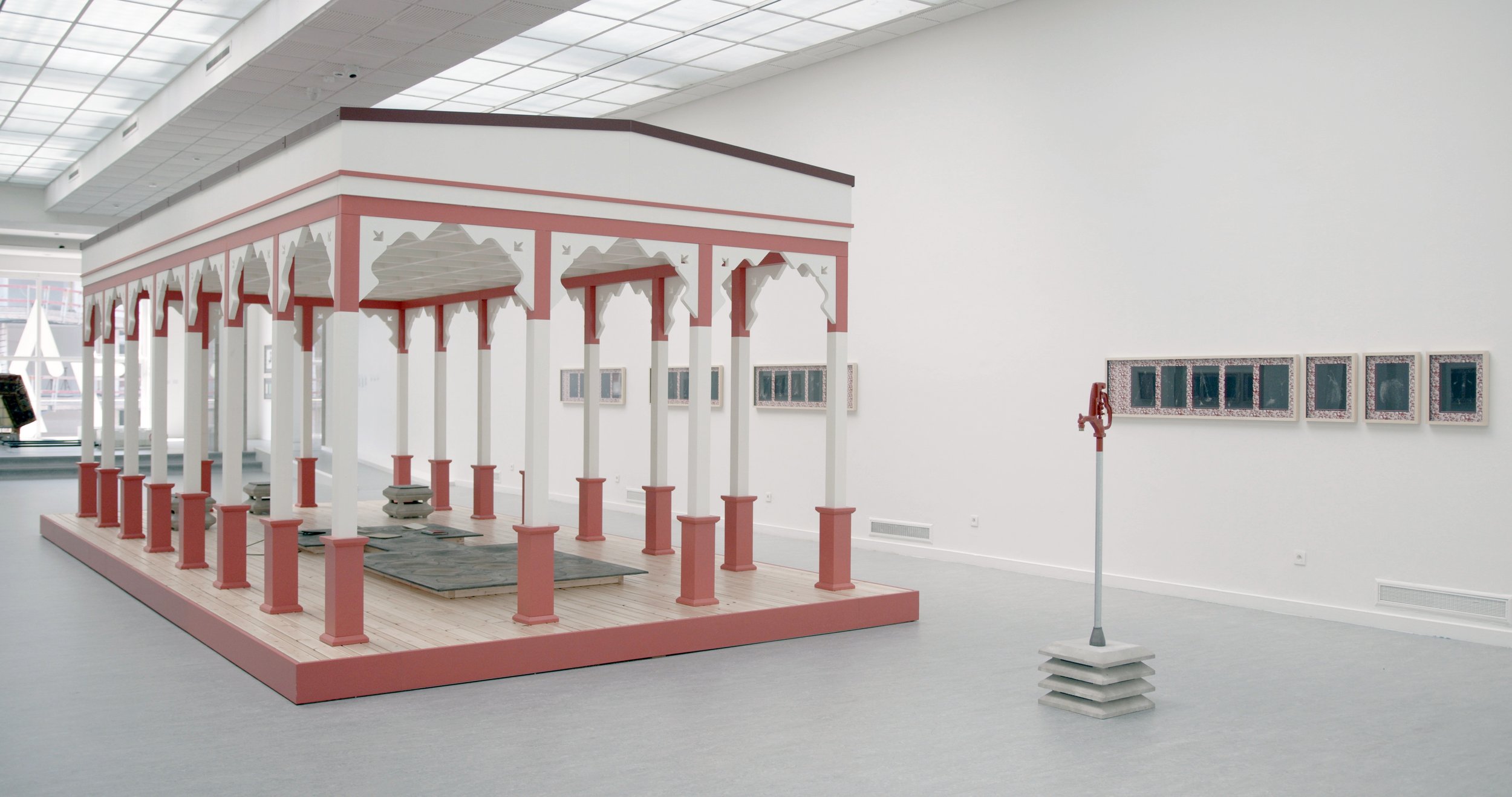
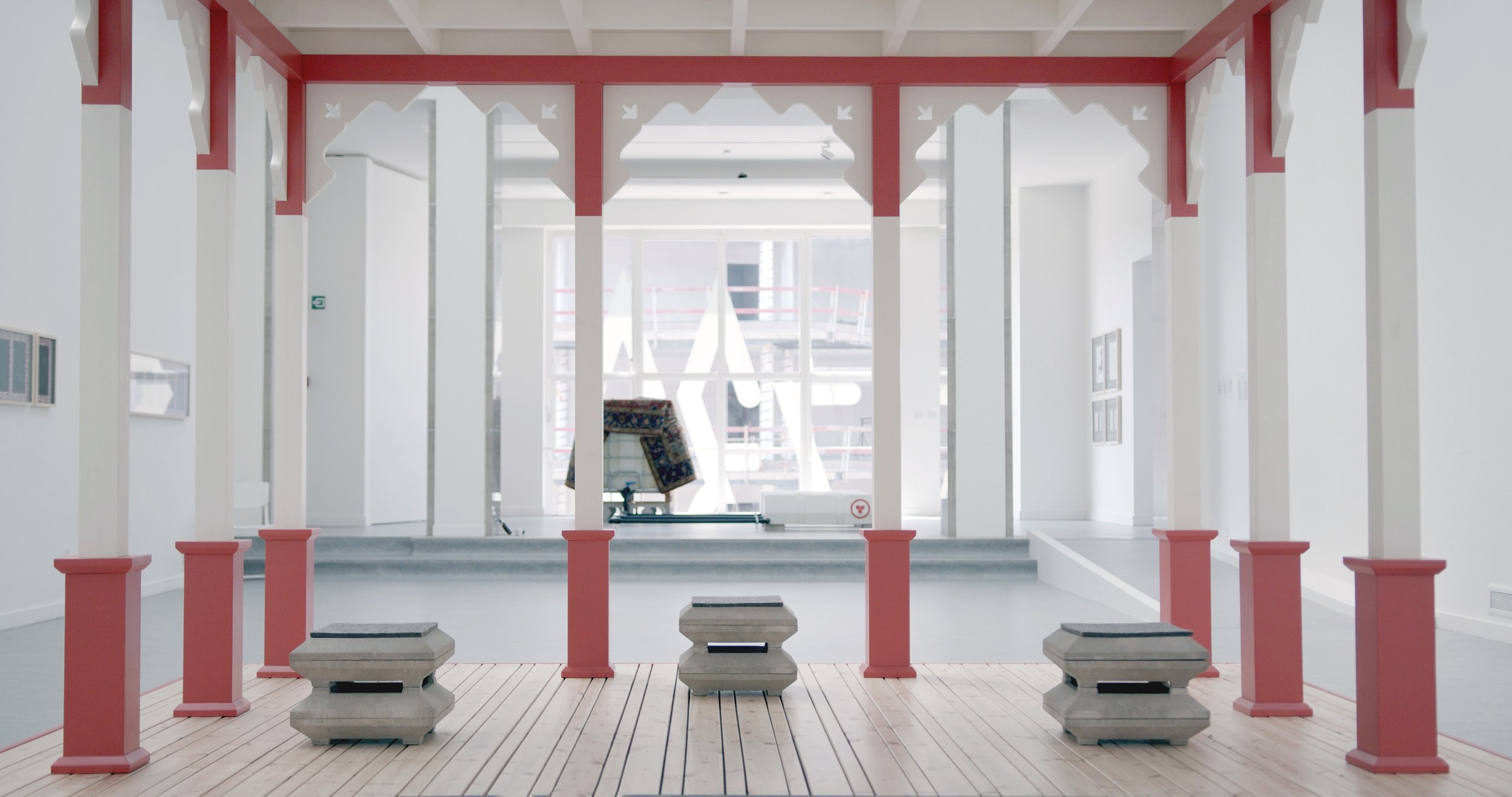
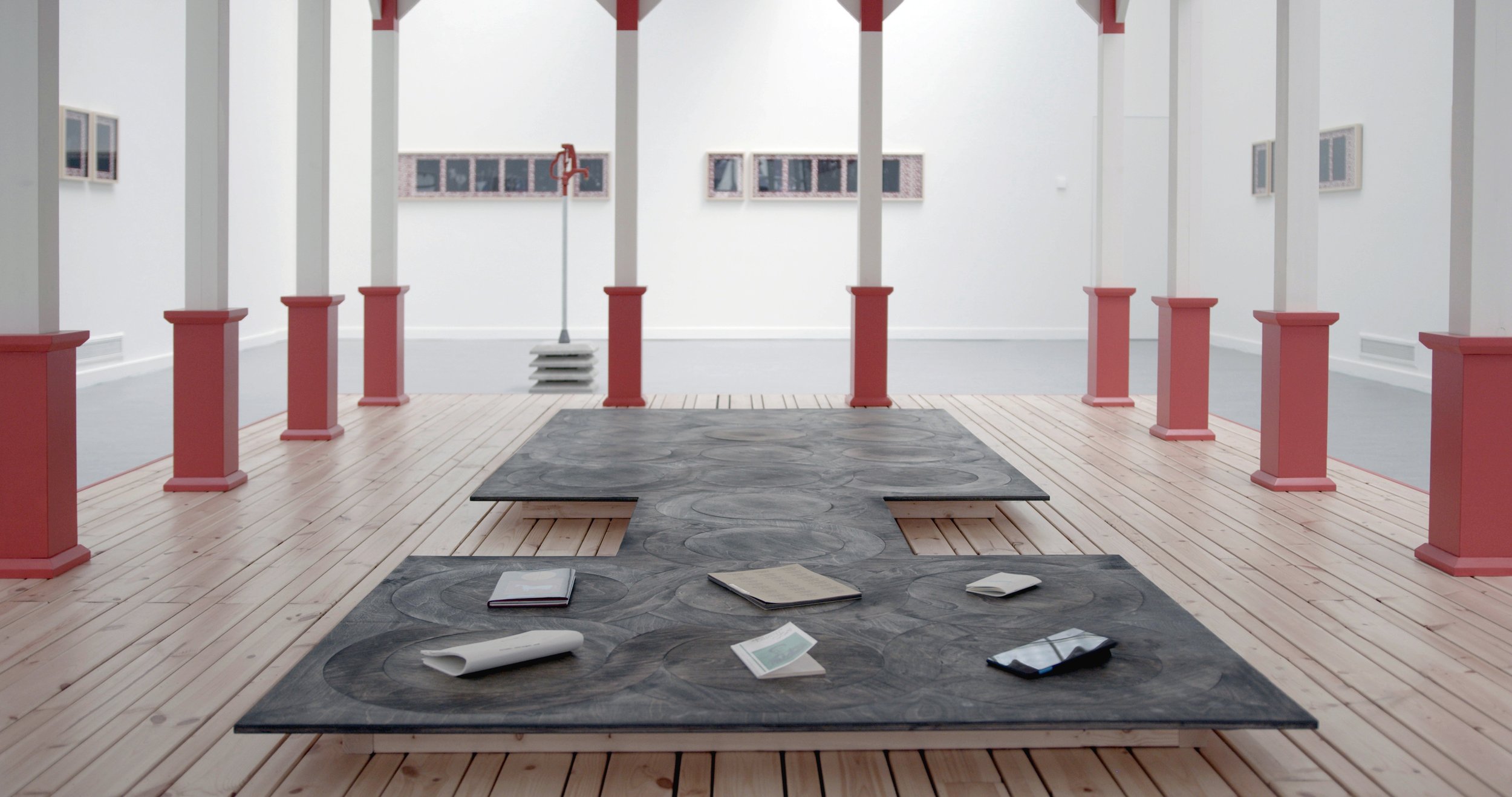
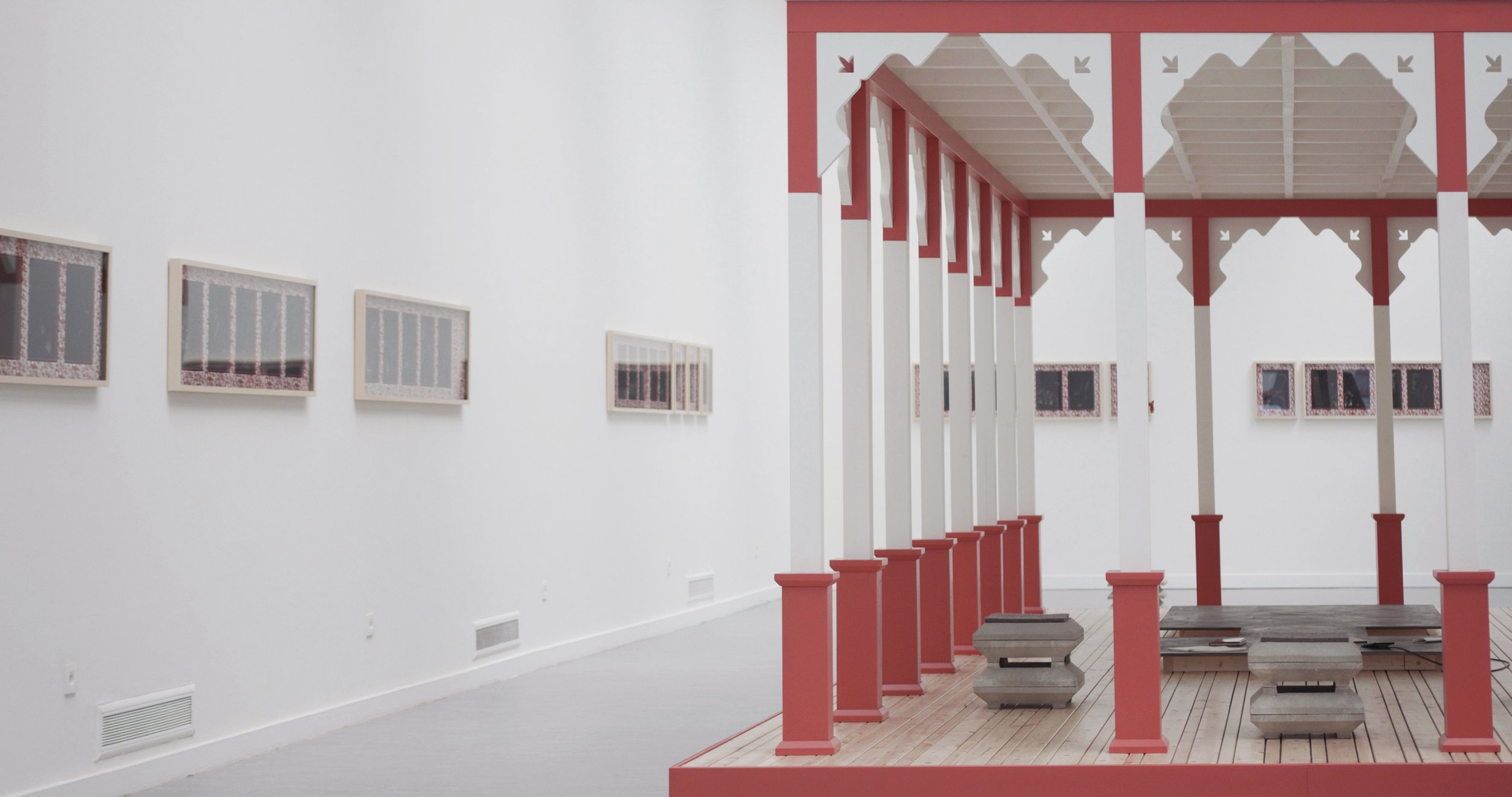
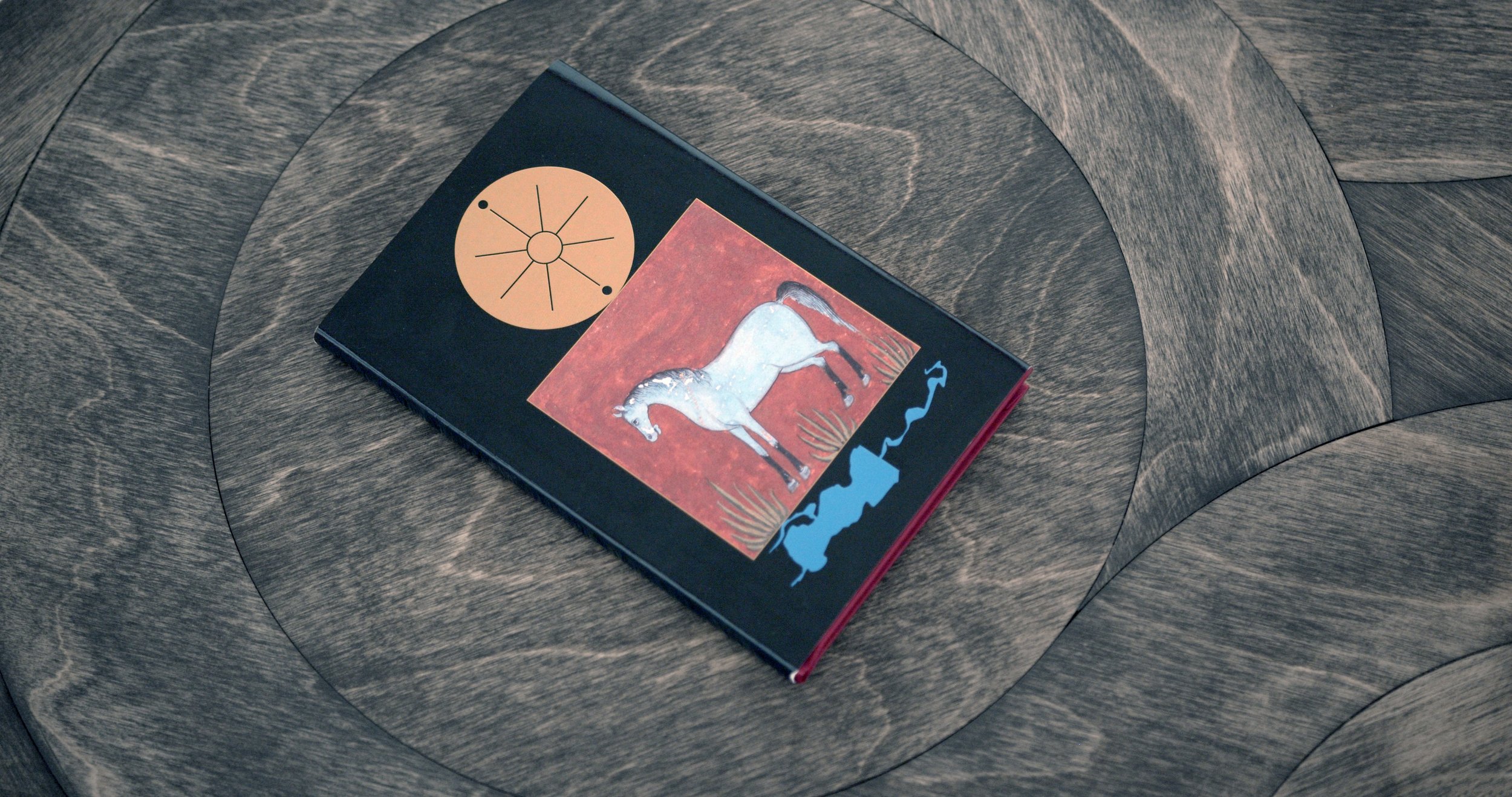
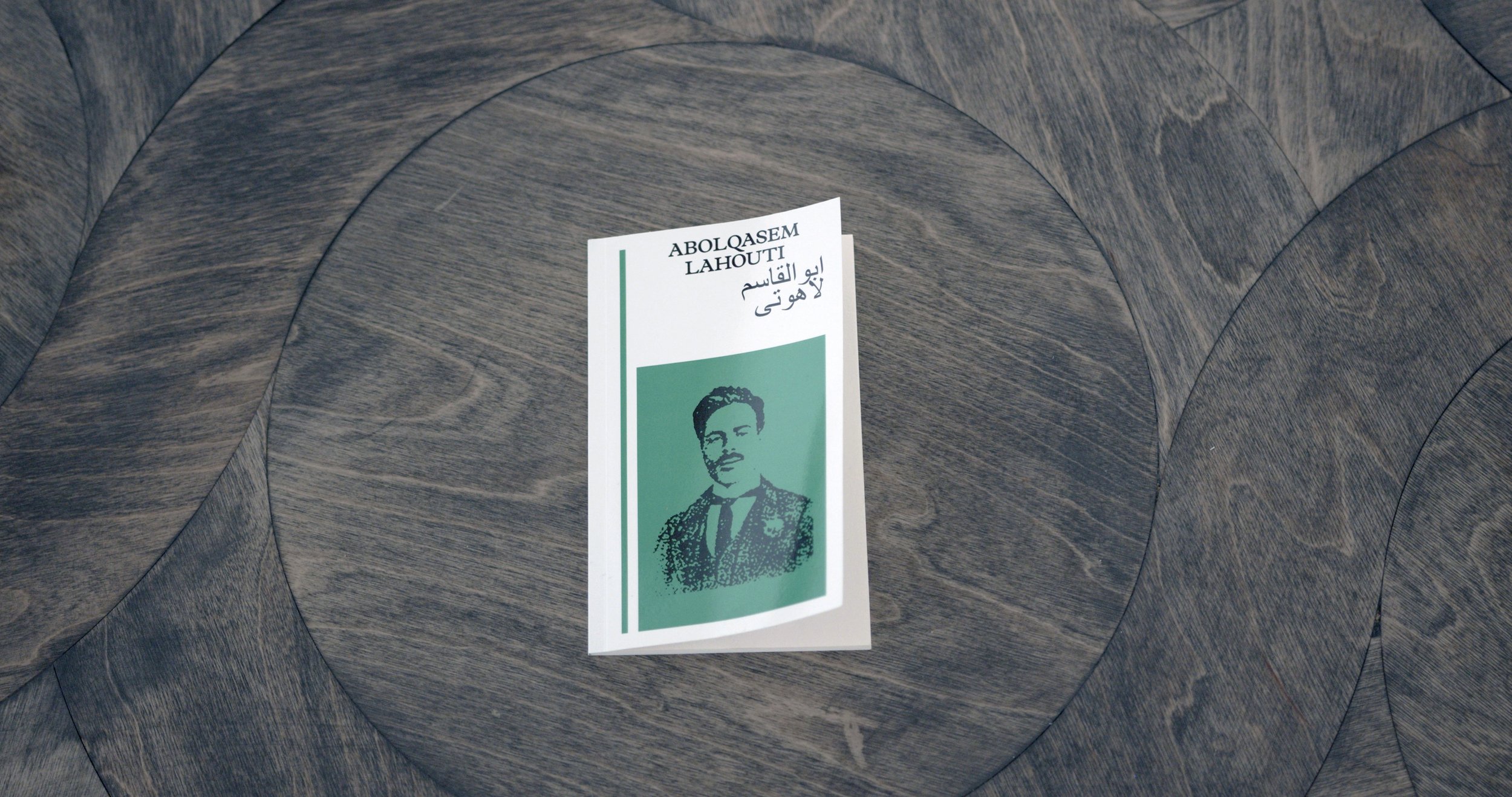
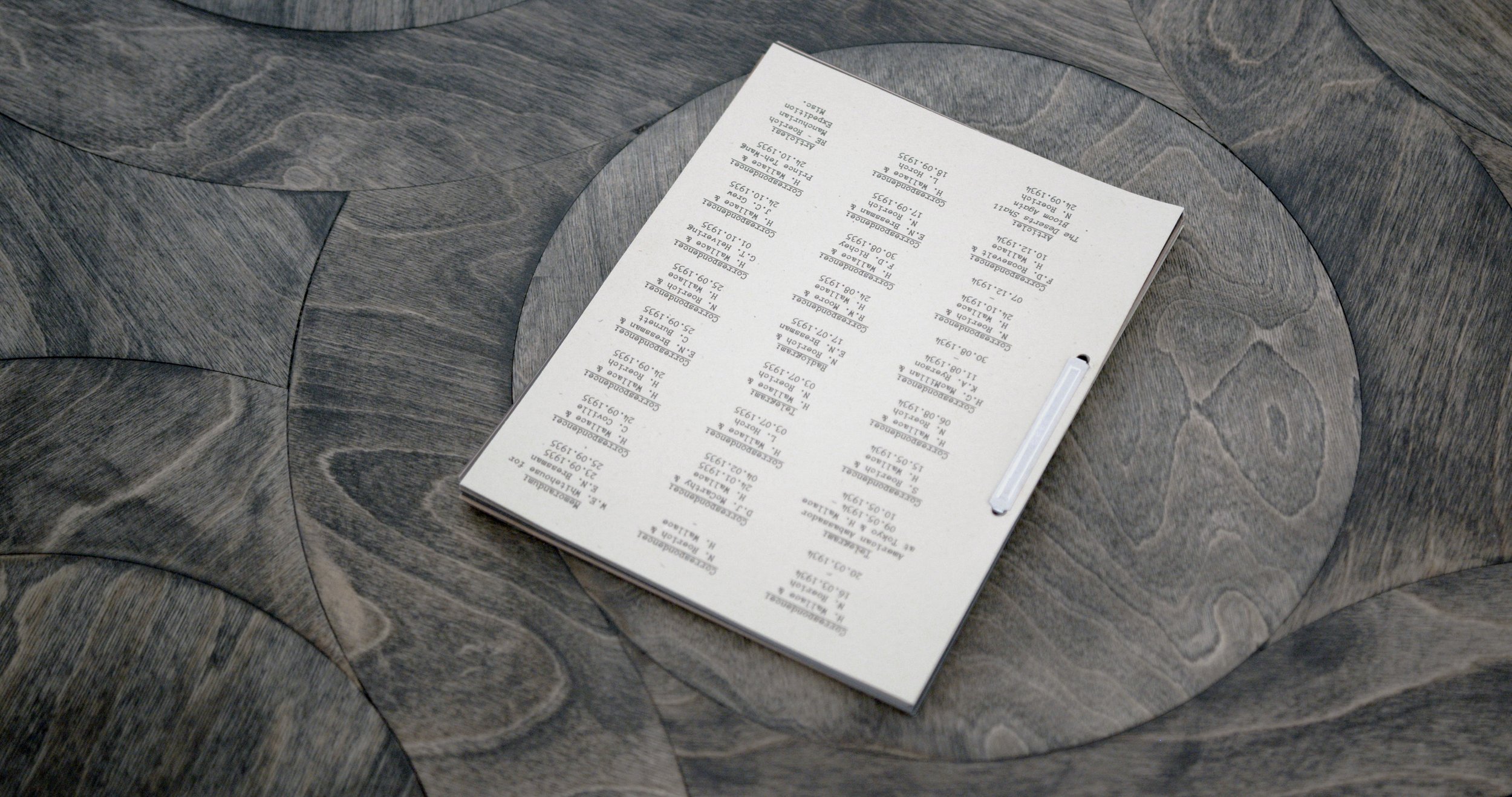
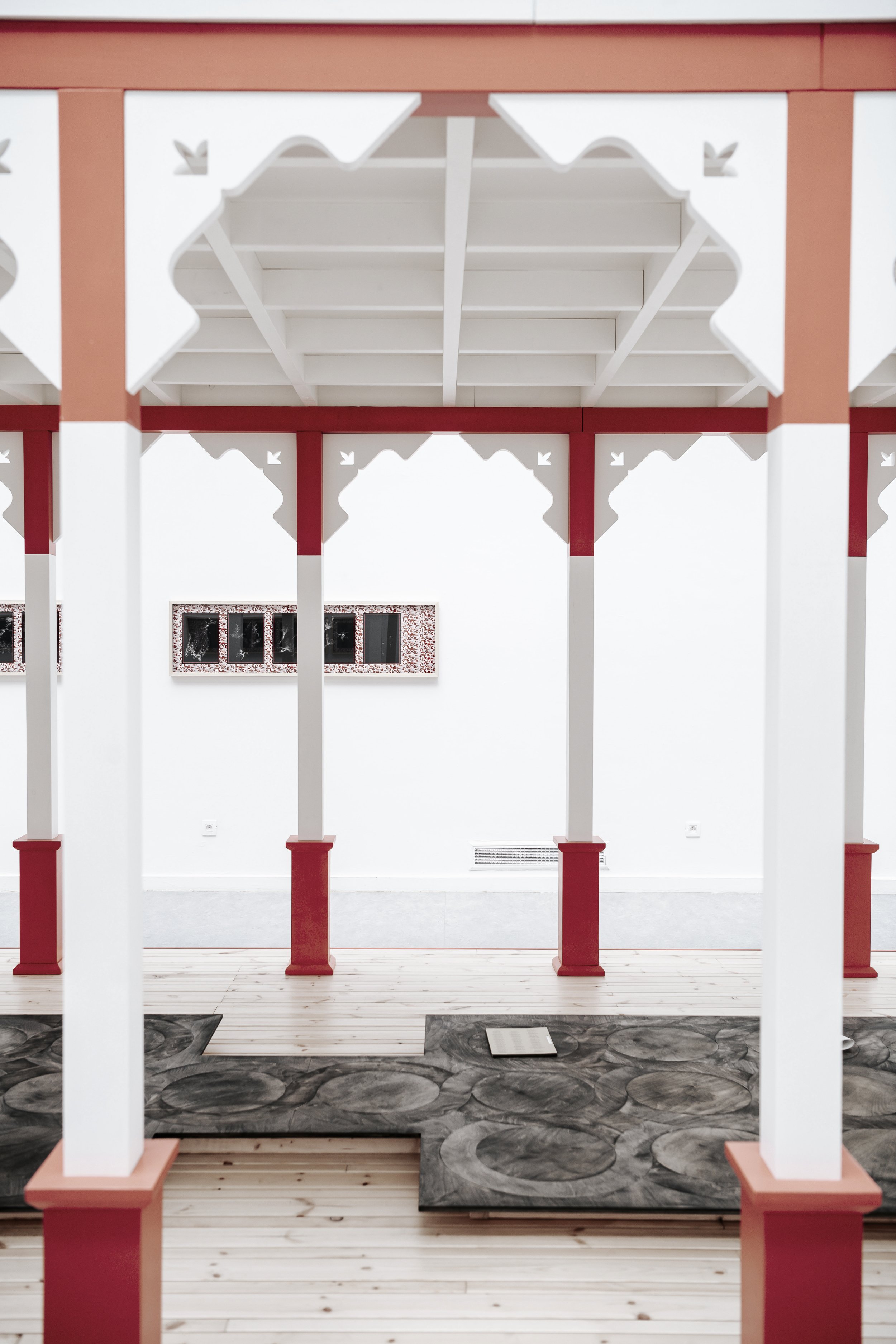
In the Name of Contemplation
Wood, zinc roofing, graphite, concrete, hand-pressed felt, tablet, publications
Publications designed by Rudy Guedj & Timur Akhmetov and authored by Anisa Sabiri, Distributed Cognition Cooperative (Anna Engelhardt & Sasha Shestakov), Benjamin Filler & Irakli Qolbaia, Dina Cheraghvand, Farshad Tavakoli, Masoud Borbor and Pejvak (Rouzbeh Akhbari & Felix Kalmenson)
In the Name of Contemplation is a facsimile of a tea room in the Stalin collective farm outside of Leninabad (Khujand), Tajikistan in the southwestern part of the Fergana Valley. The table inside is designed after the earliest backgammon table found in the archeological sites of the Shahr-e-Sukhteh (Burnt City). The pattern shows an ouroboros that is twenty-fold entangled. The publications contain newly commissioned stories about the figures and events referenced in this exhibition, among other subjects.
The Wind Traveler' is a journey through time and space. Beginning at the lush banks of the Hamun River, this story evovles around a game-maker from the ancient Sahre-Sukhte (Burnt City) who goes on a voyage northward to find the source of unusual toxification in his community.
Written by: Masoud Borbor
‘Blue birds of Hoji Alo’, on the one hand, is my dedication to the people living at the Tajik-Kyrgyz border, who have a very unfortunate fate to be part of the ongoing conflict. But on the other hand, and from all my heart, I also wish people of the world to be more open-minded and stop fighting - we just must be wiser, otherwise we degradate, otherwise we forget who we are. And we all are just creatures on this Earth - same as any other creature." - Sabiri
Written by: Anisa Sabiri
''Clandestine Service History (TPAJAX)' traces the specificities of a psychological warfare operation against Abulqasim Lahuti as part of the CIA's plans for the 1953 Iranian Coup d'état which led to the overthrow of Mohammad Mosaddegh's Government. The documents probe the subject from the perspective on Donald Wilber, an archaeologist and art historian turned spy.
Written and Compiled by: Rouzbeh Akhbari
This book follows Abolqasim Lahuti on his journey to the Pamir Mountains, where he was sent to develop social realist reflections on the force of labour in action surrounding a mega water-retention infrastructural project.
Written by: Dina Cheraghvand
The ‘My Guru’ Letters compile correspondences, memorandums, and miscellaneous documents relating the Roerich Expedition to Inner Mongolia and Northwest China in 1934-5 which was commissioned by the U.S. Department of Agriculture with the aim of collecting drought resistant plants to bring an end to the Dust Bowl.
Written by: Iraqli Qolbaia and Benjamin Filler
Compiled by: Felix Kalmenson
‘Intra-structures’ is a fictioning machine of a Telegram bot. It enacts the mundane chat of Russian propaganda workers, allowing a user to see the infrastructure that facilitates political fakes. Their messaging is a lengthy process one can see partially unravelling in the tablet on the table. To follow the entire chat, you can install Telegram messenger on your phone and search for a @intr4_bot user.
Written by: Distributed Cognition Cooperative (Sasha Shestakova & Anna Engelhardt)
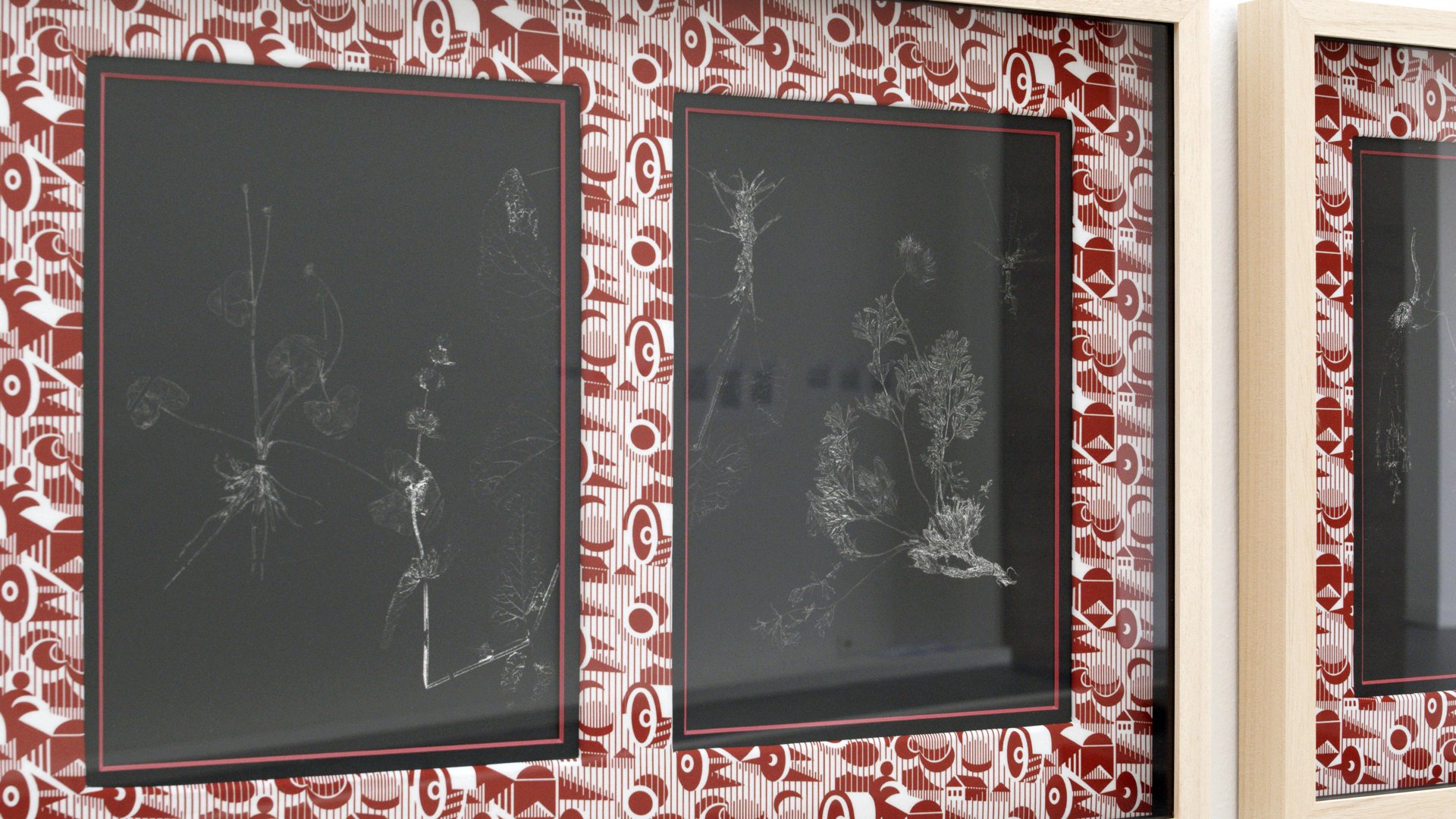


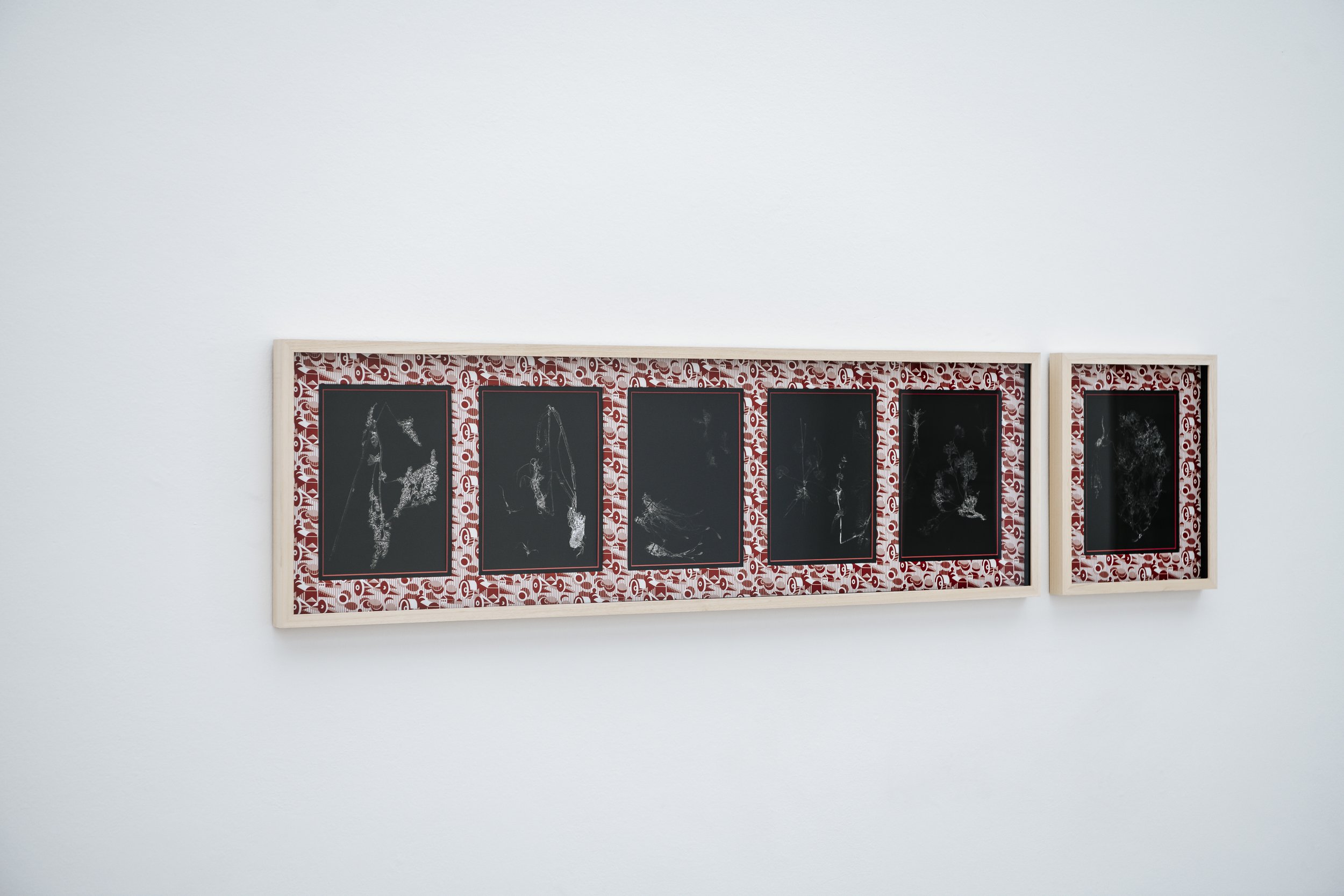
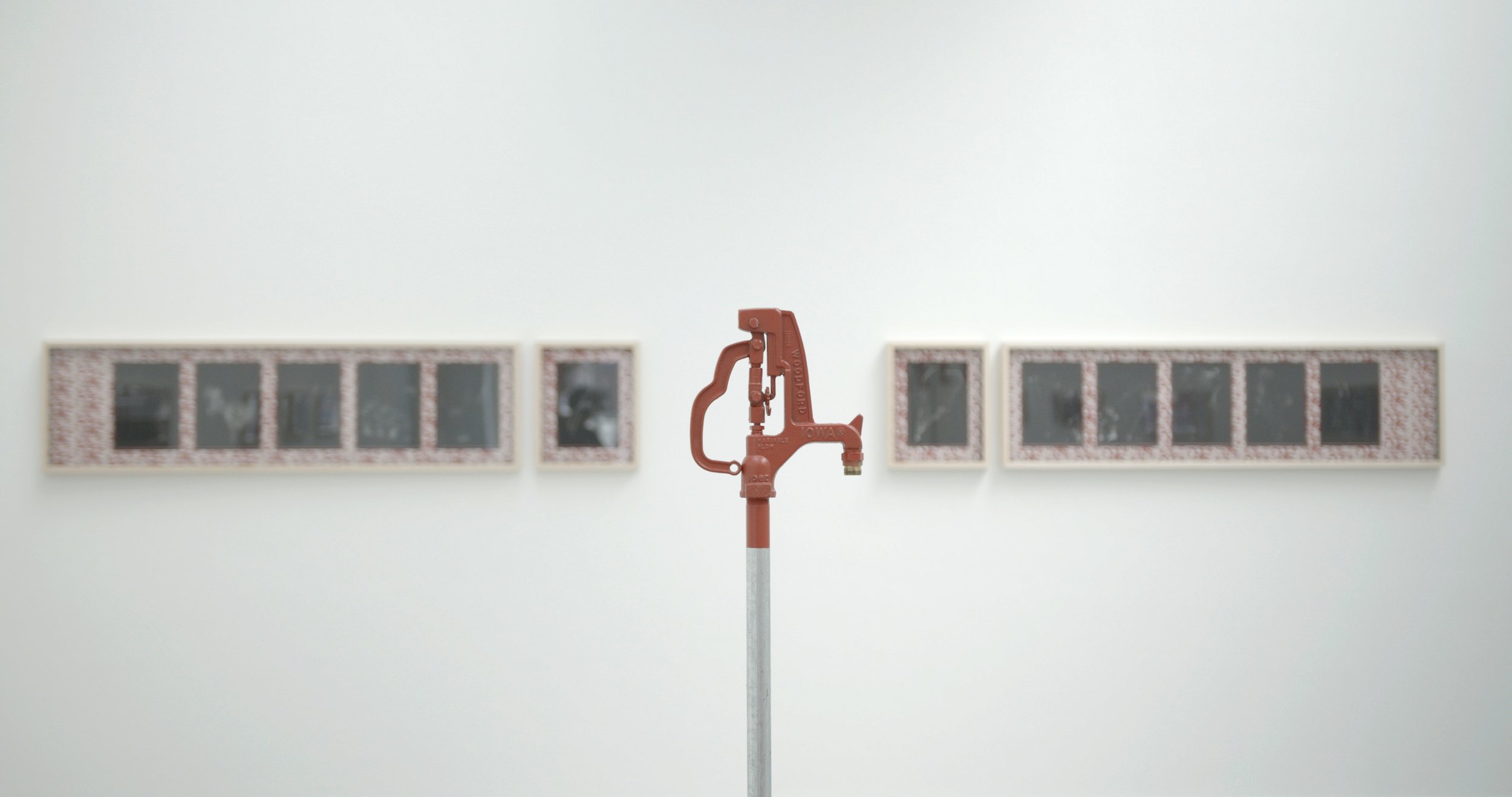
My Guru
Woodford Model Y34 Freezeless Yard Hydrant (1929), concrete, Novichok agent
‘Could this be the hidden meaning of our tortured times? I can find no other explanation, knowing as I do the essential spiritual nature of Man. But the great Seven Pillared City is not under the water, it is the water under the soil we tread. And it shall be unearthed.’
Tournament of Shadows
Fibre-Based Silver Gelatine Print, Custom Printed Fabric.
Tournament of Shadows is a series of photograms of drought-resistant plants gathered by the Russian painter and mystic Nicholas Roerich (1874-1947) and his associates. Their botanical expedition to Inner Mongolia in 1934-5 was commissioned by the U.S. Department of Agriculture , which at the time was searching for ways to restore American Great Plains which after decades of unsustainable farming practices, exacerbated by a decade of heatwaves and droughts led to severe dust storms and a wide-scale devastation of land, livelihood, and economy, known as the Dust Bowl However, Roerich and the US Secretary of Agriculture, Henry Wallace, had a double agenda. Wallace regarded Roerich as his spiritual leader and secretly supported the painter’s mission to establish a utopian society based on high spirituality and cooperative labor, known as the Sacred Union of the East. They believed that this society could avoid the extremes of both communism and capitalism, an alluring prospect during the period of the Great Depression. Although Roerich did not succeed in his utopian mission, he managed to collect no less than 900 samples of drought-resistant plants. A selection of these samples has been turned into photograms and arranged into panoramic tableaus enlisting the specimens in the narration of their own capture.
These are presented in frames upholstered with printed cotton featuring a 1930s agitprop pattern designed by Sergei Burylin depicting a plowing tractor.
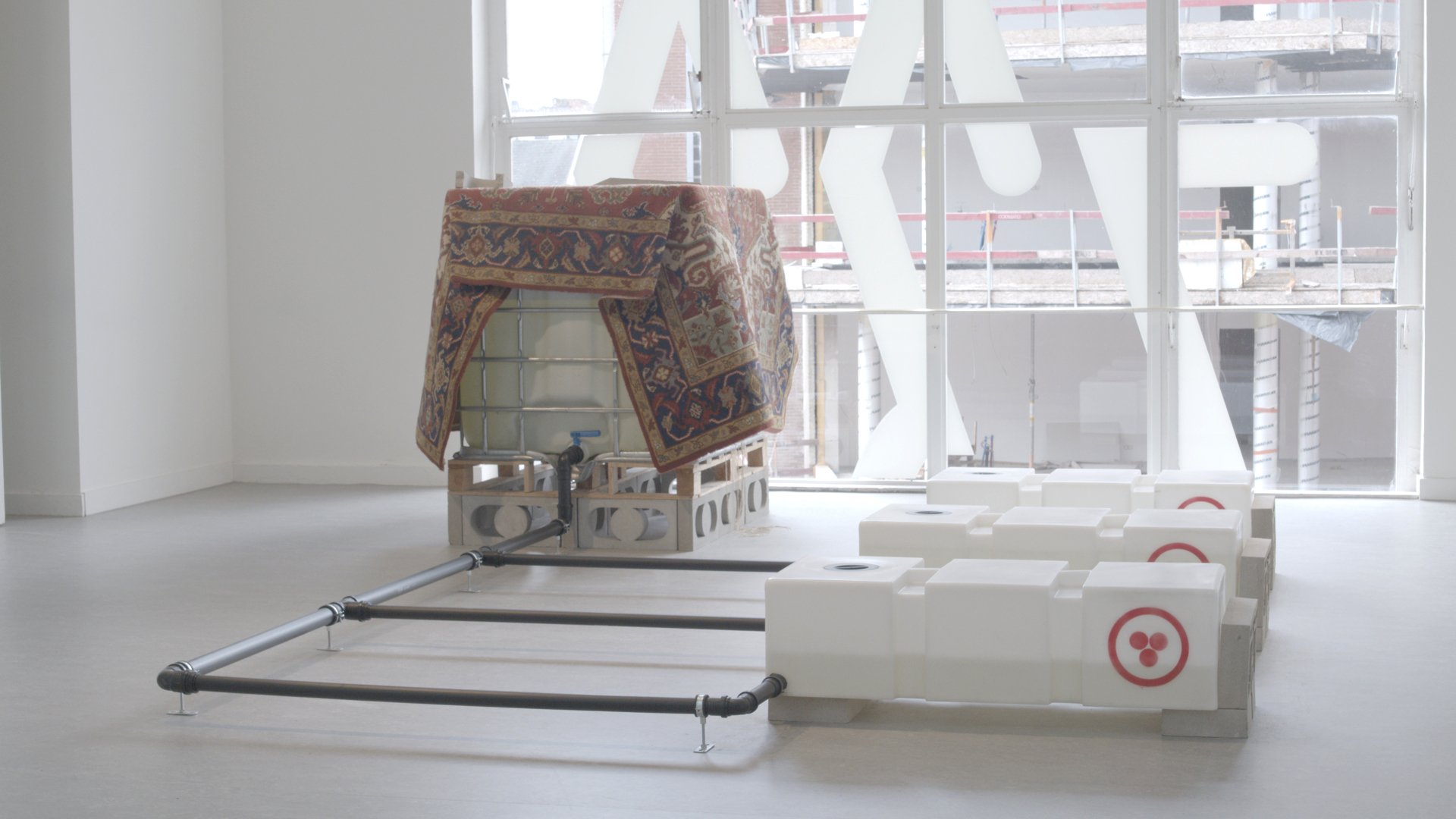
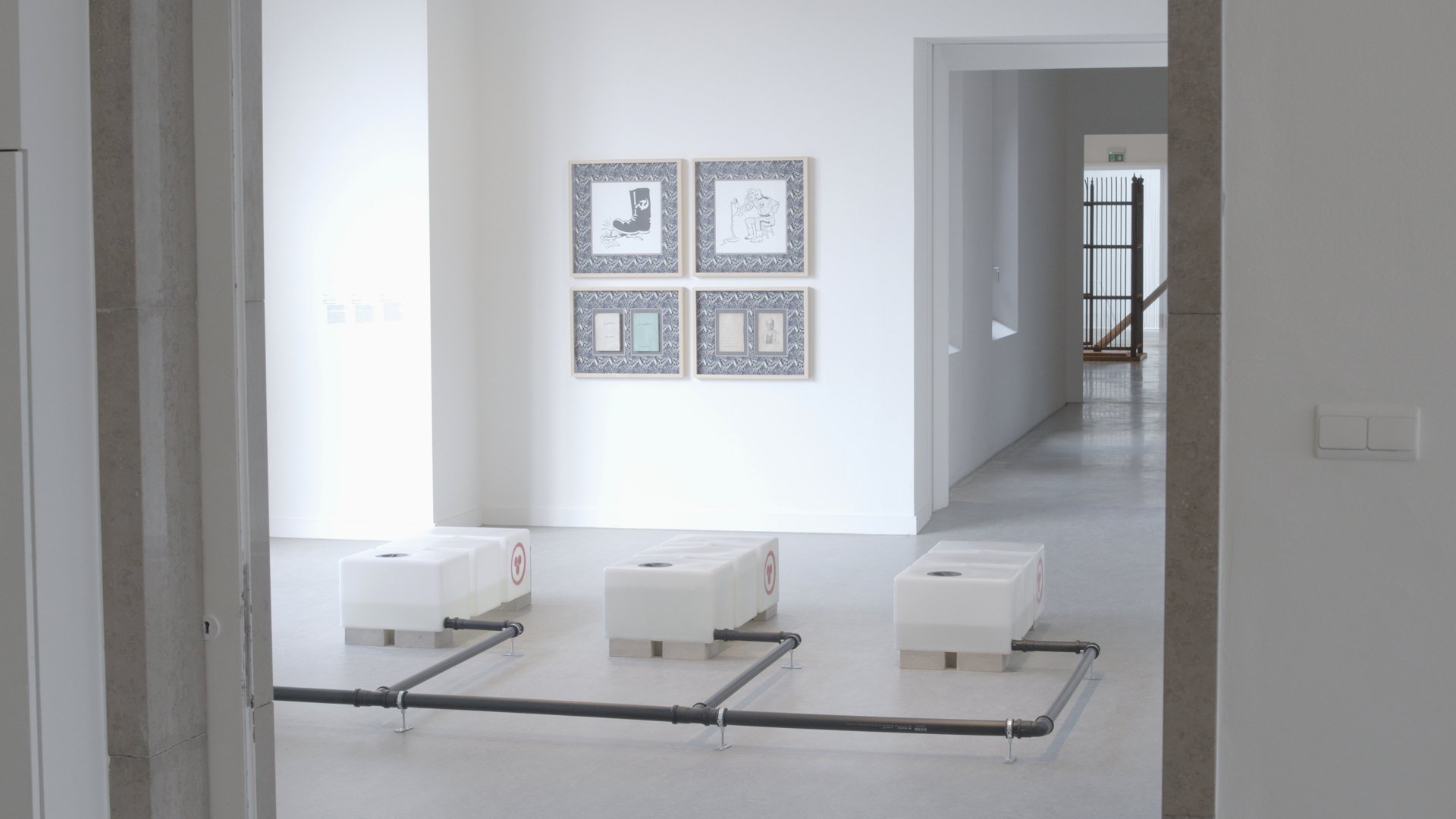
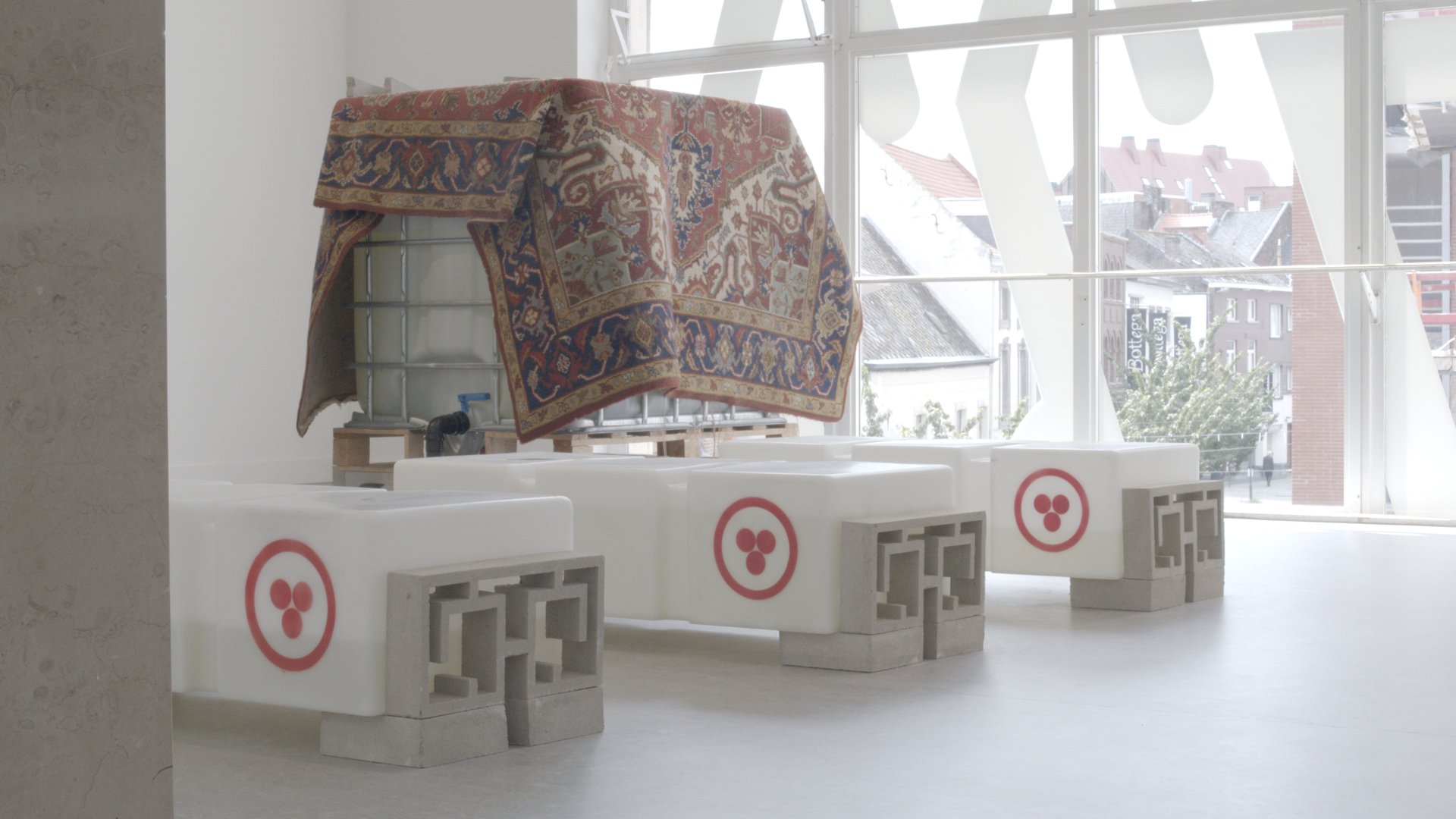
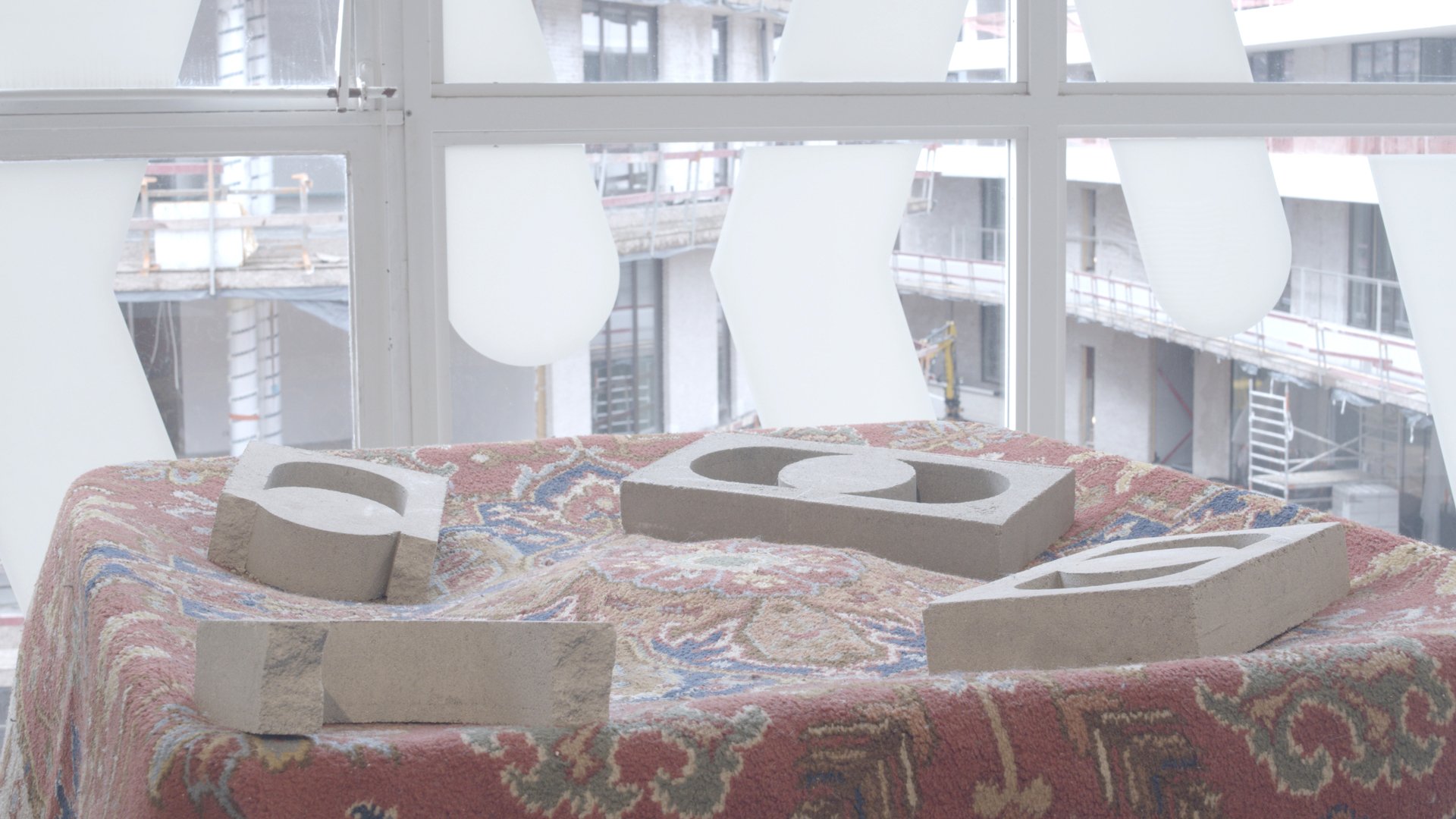
Post-Disaster Solution
1000 liter water tank, 125 liter tanks, PVC piping, MDF, water from the Demer River
This work references the system of dams, canals and water management infrastructures of the Fergana Valley. Lying at the intersection of two rivers and three international borders, this valley is at the center of a long-standing conflict over water access control. The water poor countries of Uzbekistan, Kazakhstan and Turkmenistan allege that planned dams in upstream Tajikistan and Kyrgyzstan will exacerbate existing water shortages downstream, affecting among other things the cotton industry. In light of the heightened tensions in the region, the Pax Cultura symbol on the reservoir refers to the international treaty on the Protection of Artistic and Scientific Institutions and Historic Monuments (also known as the Roerich Pact).
Made possible with the generous support of:











